Ruđer Bošković Science Institute Combats Climate Change by Developing New Material
May 5, 2021 - With ecology being the key to survival, the Ruđer Bošković Science Institute combats climate change by developing a new material known as CuZn-MOF-74.
The pandemic is nasty, the nuclear holocaust is a scary thought, but greenhouse gases remain an omnipresent potential for the death of us as they trigger climate change on whose negative effects scientists have been warning us about for decades.
Like the United States, the Environmental Protection Agency informs on its website, these gases trap the heat in the atmosphere, which in terms raises the temperature we experience.
The website lists the main types of these airier troublemakers:
CO2 (Carbon dioxide - enters the atmosphere through burning fossil fuels (coal, natural gas, and oil), solid waste, trees, and other biological materials, and also as a result of certain chemical reactions. It is removed by plants that use it for photosynthesis – a process that provides food for the pants and oxygen for other beings).
CH4 (Methane-emitted during the production and transport of coal, natural gas, and oil. Methane emissions also result from livestock and other agricultural practices, land use, and the decay of organic waste in municipal solid waste landfills).
N2O (Nitrous oxide - emitted during agricultural, land use, industrial activities, combustion of fossil fuels and solid waste, as well as during treatment of wastewater).
Last but not least:
Fluorinated gases ( such as Hydrofluorocarbons, perfluorocarbons, sulfur hexafluoride, and nitrogen trifluoride are synthetic, powerful greenhouse gases that are emitted from a variety of industrial processes. Fluorinated gases are sometimes used as substitutes for stratospheric ozone-depleting substances. These gases are typically emitted in smaller quantities, but because they are potent greenhouse gases, they are sometimes referred to as High Global Warming Potential gases)
Each of these gases can stay in the atmosphere for a very long time, and transferring these gases into something else is a challenge to beat. Fortunately, at least for carbon dioxide, we might be getting closer to the solution than we think.

Pixabay
Ruđer Bošković Science Institute (IRB) in Croatia reported on its website that they are at the brink of a new material that can selectively transform carbon dioxide into methanol alcohol. The green chemists in Zagreb were closely cooperating with colleagues from the Slovenian Chemical Institute (KI), and McGill University in Canada. The results of their mutual research, in a more further scientific detail, are published in a scientific article on the prestigious ACS Publications.
But in the summarization, doctoral candidates Tomislav Stolar and Valentina Martinez, alongside dr. Bahar Karadeniz, under the lead of dr. Krunoslav Užarević (IRB), and dr Tomislav Friščić (McGill University) developed a bi-metal proposal coordination material known as CuZn-MOF-74. The layman speaking complex name is owned to the fact it's made from copper (Cu) and zinc (Zn) using a mechanic-chemical method of making bi-metal metalorganic networks known as MOF-74. As TCN previously reported, that method is an environmentally sustainable synthetic strategy that is further elaborated in a scientific article in 2019.
The catalytical properties of this material were tested KI in Ljubljana with the help of the scientists from the Institute: dr. Blaž Likozar, dr. Gregor Mali, dr. Ana Bjalić, and Anže Prašnikar.
The results have shown that this material has a modest catalyst (meaning it speeds up) activity to synthesize methanol, and post-reaction presented the scientists with a non-porous material which showed multiple enhancement of both catalyzation and selection for methanol synthetization.
„This research is a good example of multidisciplinary and international collaboration between strong research centers in the region. To me, as a young scientist, it's important that I can work on the current issues, such as transforming carbon dioxide into methanol, thanks to the guidance of dr. Užarević. There is a big potential for switching to sustainable chemical processes through the program of European Green plan, and research in that field should be the priority“, said the lead author Tomislav Stolar, a doctoral candidate in the IRB's laboratory for green synthesis.
The IRB official website added that the search for an effective catalyzation to transform carbon dioxide into methanol is the focus of scientists worldwide. Methanol could also be then used as a fuel and replace the current fossil products.
Today you already have the term „Methanol Economy“ that predicts methanol will impose as the vital compound to store energy, as a fuel, and a source of carbon to synthesize valuable compounds. Efficient synthesis of methanol from carbon dioxide presents an example of sustainable chemical reaction of added value, and with great economic potential“, concludes the press release on IRB.
Apart from IRB scientists combating climate change, Croatia takes care of the environment, particularly national parks on whom you can learn more on our TC page.
For more about science in Croatia, follow TCN's dedicated page.
Croatia Pan Europe Trains Will Run 160 Kilometres Per Hour By 2030
November 2, 2020 – From southern Spain to Budapest through Rijeka and Zagreb and from Salzburg through Zagreb, Belgrade and Skopje to Greece, Croatia pan Europe trains will run 160 kilometres per hour by 2030
In the biggest investment ever made in the infrastructure of the country's rail network, Croatia pan Europe trains will run 160 kilometres Per Hour By 2030. In an investment costing 4.5 billion Euros, 750 kilometres of railways will be modernised.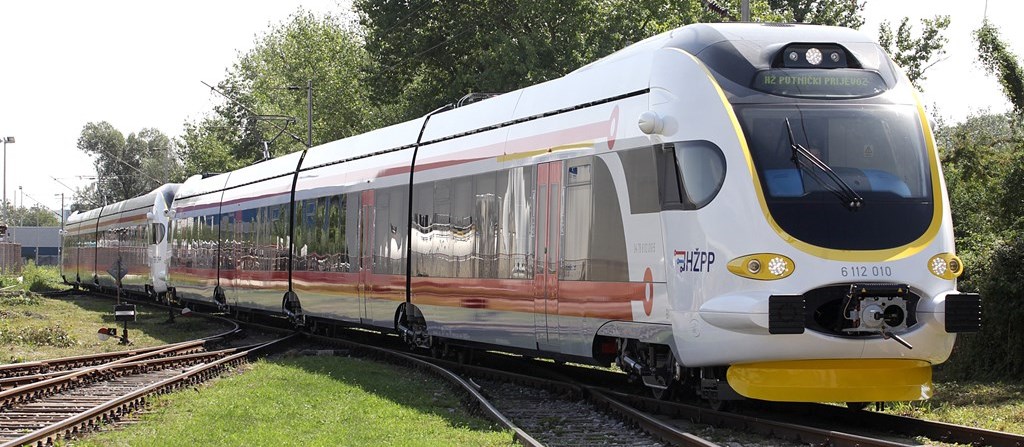 © HZPP
© HZPP
The lines that will receive the upgrade will connect Rijeka to Budapest in Hungary via Zagreb (RH2) and Zagreb to Belgrade via Vinkovci (RH1). Though these lines already exist, they have never undergone an overhaul of the scale proposed. The modernisation with ensure double lanes across the whole of both routes and facilitate passenger train speeds of 160 kilometres per hour.
The level of investment means that during the next ten years, HŽ Infrastruktura's (Croatian Railway Infrastructure Company) rebuild of the Croatia pan Europe trains network will be the largest infrastructure project in the Republic of Croatia and the largest beneficiary of EU grants in the transport sector. Most of the money for the modernisation is coming from European Union grants. Almeria on the Mediterranean, in Andalusia, southern Spain, where the Mediterranean Corridor begins © ddz photo
Almeria on the Mediterranean, in Andalusia, southern Spain, where the Mediterranean Corridor begins © ddz photo
The RH2 line is part of the Mediterranean Corridor which connects the south of the Iberian peninsula with eastern Hungary via six countries. The line runs from Almeria on the Mediterranean coast in the south-east of Spain, through Madrid and Barcelona. It passes through Marseille in France, then northern Italy, Slovenia, Croatia, the Hungarian capital of Budapest, before finishing in Záhony in the east of Hungary, not far from the border with Ukraine. The route covers more than 6000 kilometres. The Croatian section will pass through Jurdani (six kilometres north of Opatija), Rijeka, Karlovac, Zagreb, Dugo Selo, Križevci and Koprivnica.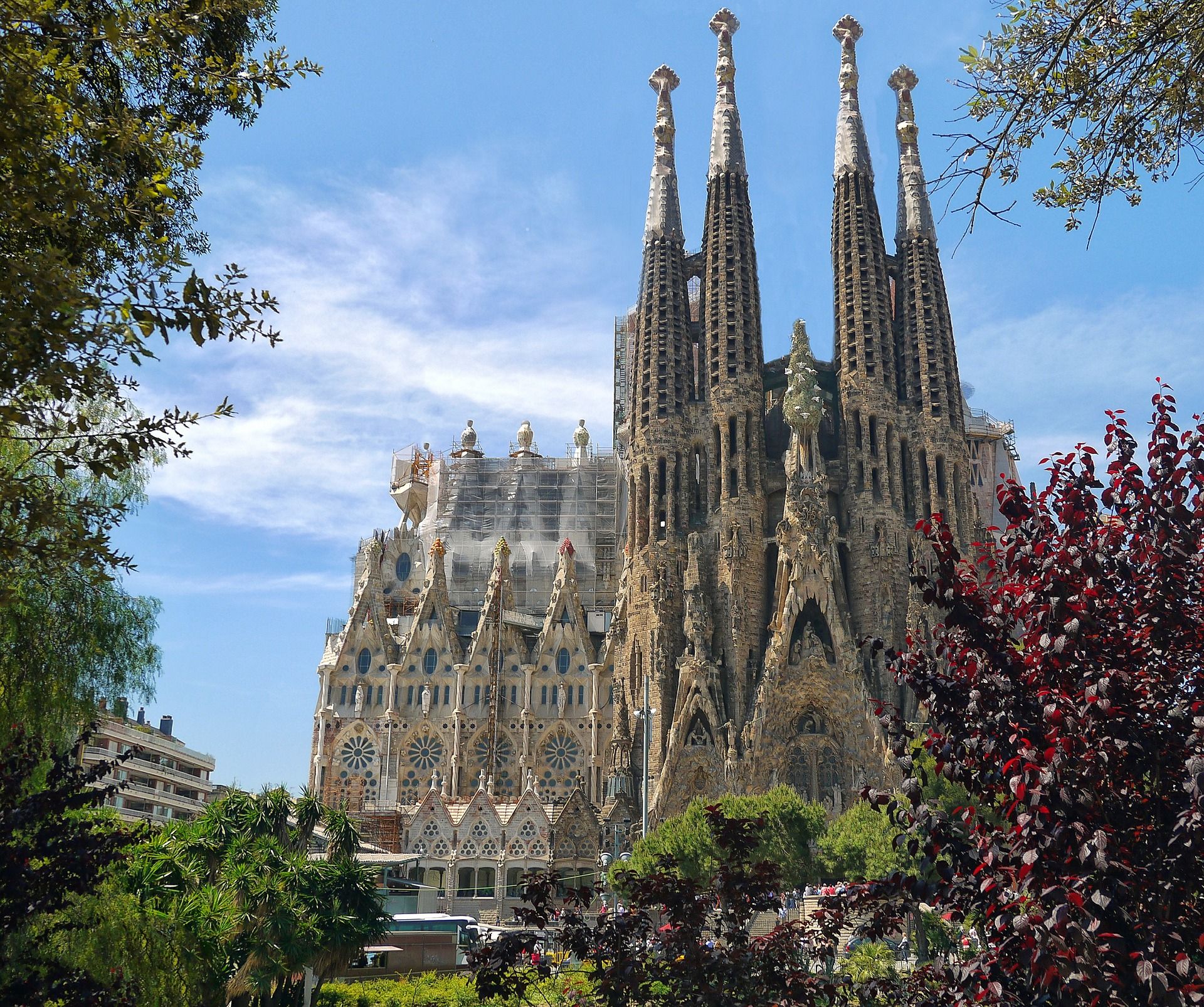 To Croatian rail passengers, the Spanish city of Barcelona will be just a few hours away by 2030 © Patrice Audet
To Croatian rail passengers, the Spanish city of Barcelona will be just a few hours away by 2030 © Patrice Audet
The RH1 line is part of the Pan-European Corridor X. The Croatia pan Europe trains section of this transport route was once one of the three lines taken by the Orient Express. The modernised rail line will start in Salzburg, Austria and pass through Ljubljana before reaching Zagreb. The line will pass through Slavonski Brod and Vinkovci before making its way to Belgrade, then Niš in southern Serbia. The old Oriental Express line then headed east, to Istanbul via Sofia, Bulgaria. The EU-funded train section of the Pan-European Corridor X instead heads south, to Thessaloniki in Greece via Skopje in Macedonia.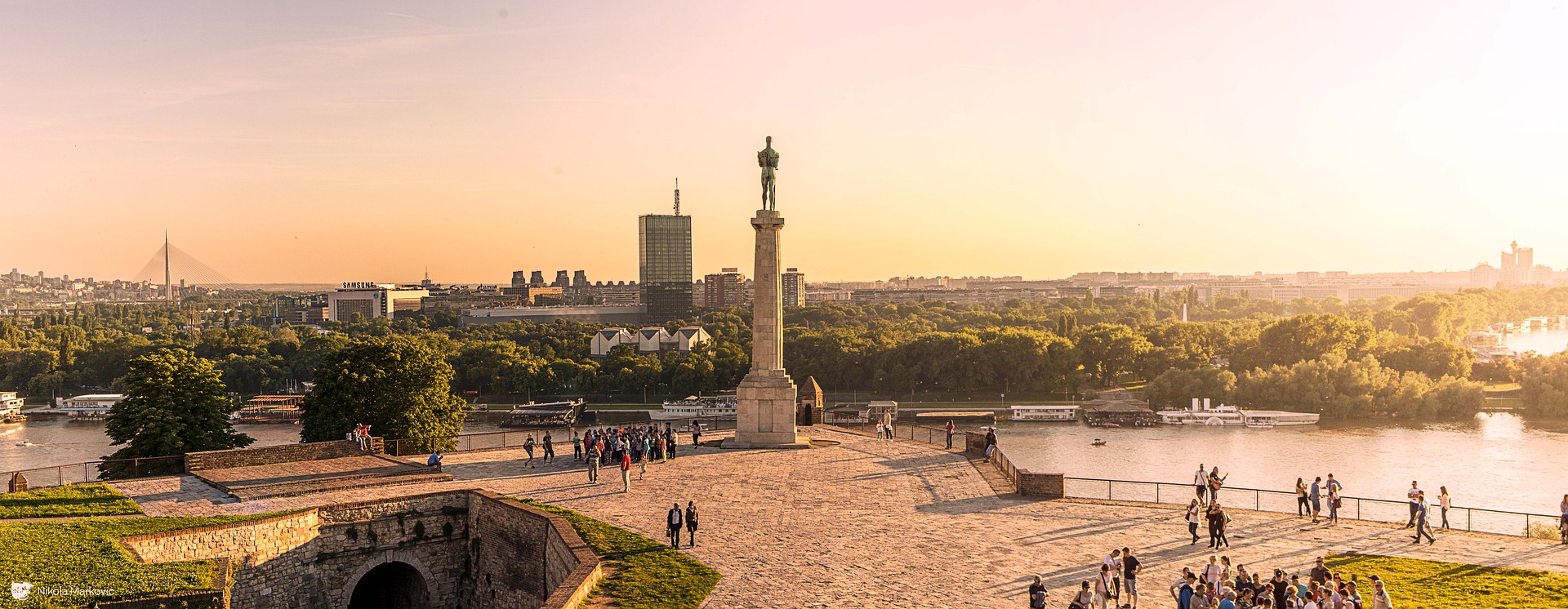 The rail journey time between Zagreb and Belgrade (pictured) will be shortened considerably by the improvements © Djordje Jovanovic
The rail journey time between Zagreb and Belgrade (pictured) will be shortened considerably by the improvements © Djordje Jovanovic
Trains are currently the greenest transport option for long-distance travel. As the world heads in the direction of seeking energy sources that do not rely on finite fossil fuels, rail also currently looks to be the long-distance travel option best-equipped to meet this challenge. In the future, visitors from all across Europe may increasingly rely on the Croatia pan European trains network in order to access the country. The improvements also increase business and leisure opportunities for Croatians in Europe.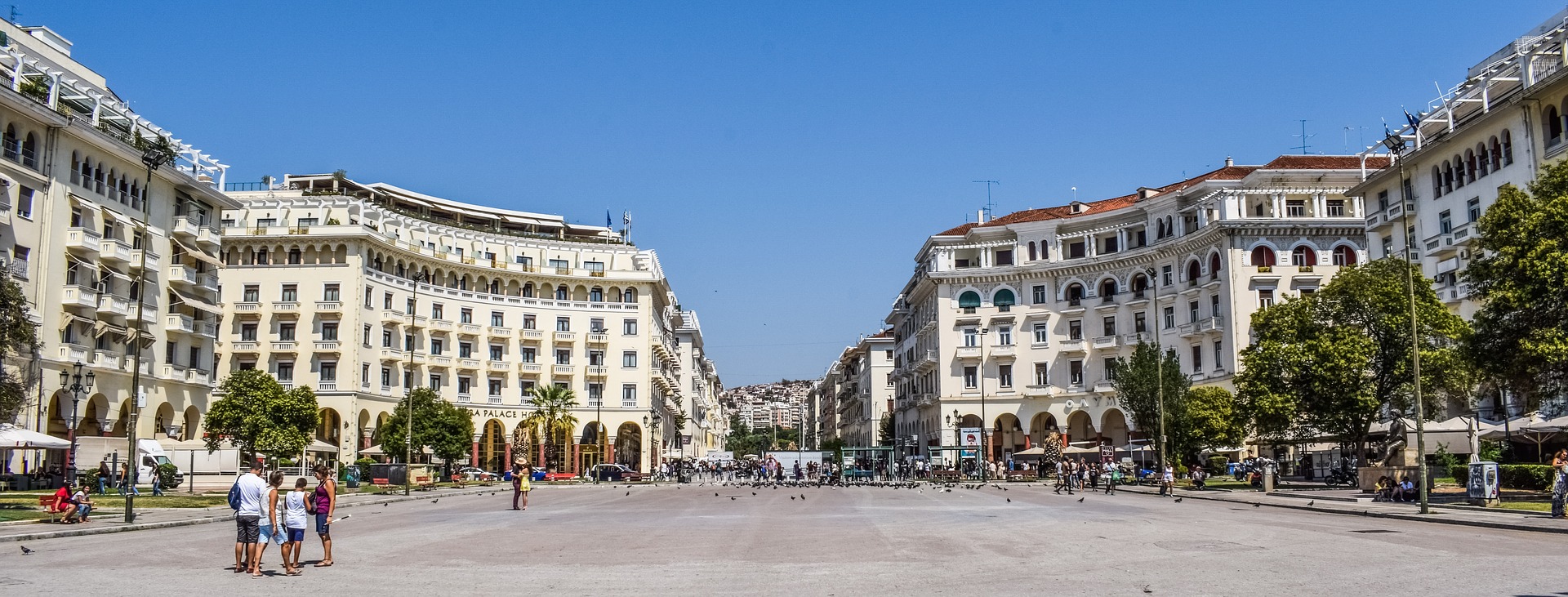 Thessaloniki in Greece is one of the most popular cities in Europe for visitors. The renewed rail section of the Pan European Corridor X will end here © Dimitris Vetsikas
Thessaloniki in Greece is one of the most popular cities in Europe for visitors. The renewed rail section of the Pan European Corridor X will end here © Dimitris Vetsikas
Around 935 million Euros was invested in the Croatian railway infrastructure between 2010 and 2019. The new investment dwarfs those figures. The initial investment, occurring between 2020 and 2024 amounts to as much as 1.8 billion Euros, of which almost 78.7 per cent is co-financed by the European Structural and Investment Funds (ESI) and the Connecting Europe Facility (CEF). From 2025 to 2030, EU funds totalling more than 2.7 billion Euros are expected to be invested in the Croatia pan European trains network.
Freight train passage along the lines will also be increased, reaching a new speed of 120 kilometres per hour. The Croatia pan European trains network also offers great potential to open up continental Croatia regions to international visitors. The Croatian railway network currently has 2,617 kilometres of track, of which 274 kilometres are double-track and 980 are electrified.
For the latest travel info, bookmark our main travel info article, which is updated daily.
Read the Croatian Travel Update in your language - now available in 24 languages
Ljubljana, the Perfect Foodie City Break Destination from Croatia
May 29, 2019 - The third and final part of the recent press trip around Slovenia organised by the Association of Slovenian Travel Journalists, a trip attended by TCN. Ljubljana.
Although TCN is aimed at all things Croatia, that does not mean we should ignore the neighbours. One of the many things I have appreciated since making the switch from Hvar to Varazdin is the proximity of our new home to the rest of Europe. A spontaneous decision to visit family over the Christmas holidays, for example, saw us at the Dunkirk ferry after 14 hours in the car. But there are many fascinating places to explore much closer to home in Hungary, Austria and Slovenia to name but three.
And so I was delighted to accept an invitation from the Association of Slovenian Tourist Journalists for a 4-day tour of our western neighbour last week. And what a fun and diverse trip it was, starting with the ultimate glamping detox on the border at Big Berry and the wonderful Bela Krajina region, before a comprehensive tour of the city within the city of Ljubljana, BTC City - whose contents were as surprising as they were impressive.
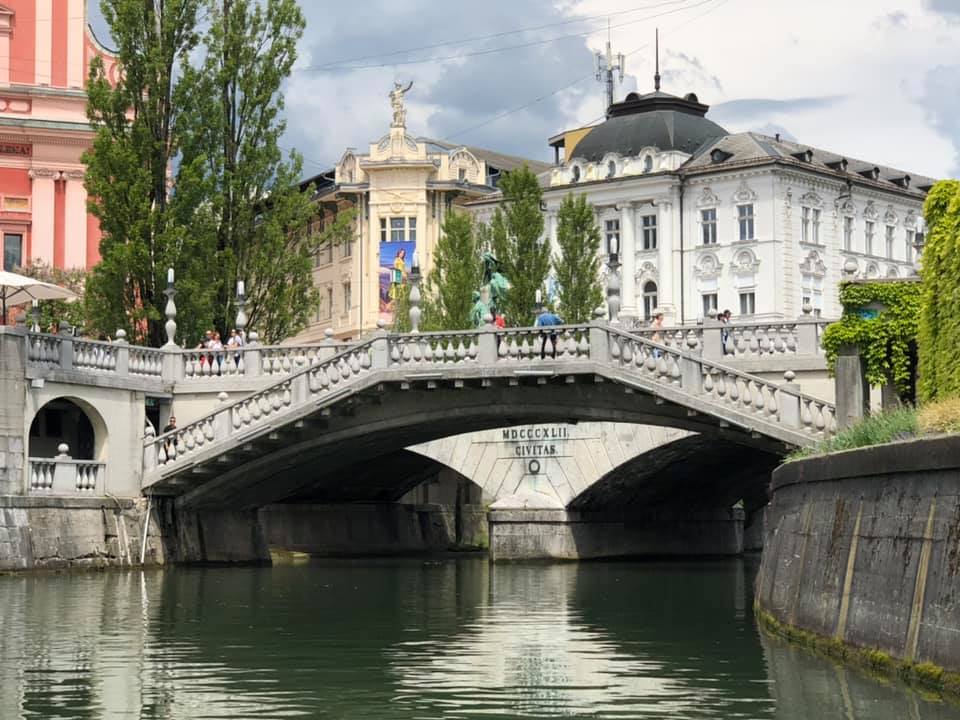
The final day was left for the capital itself, gorgeous Ljubljana, a city I have visited a couple of times (and been totally charmed by) but do not know well. Our colleagues at Total Slovenia News are based in Ljubljana, and they offer arguably the best ongoing information about the Slovenian capital - here are 25 things to know about Ljubljana to get you started.
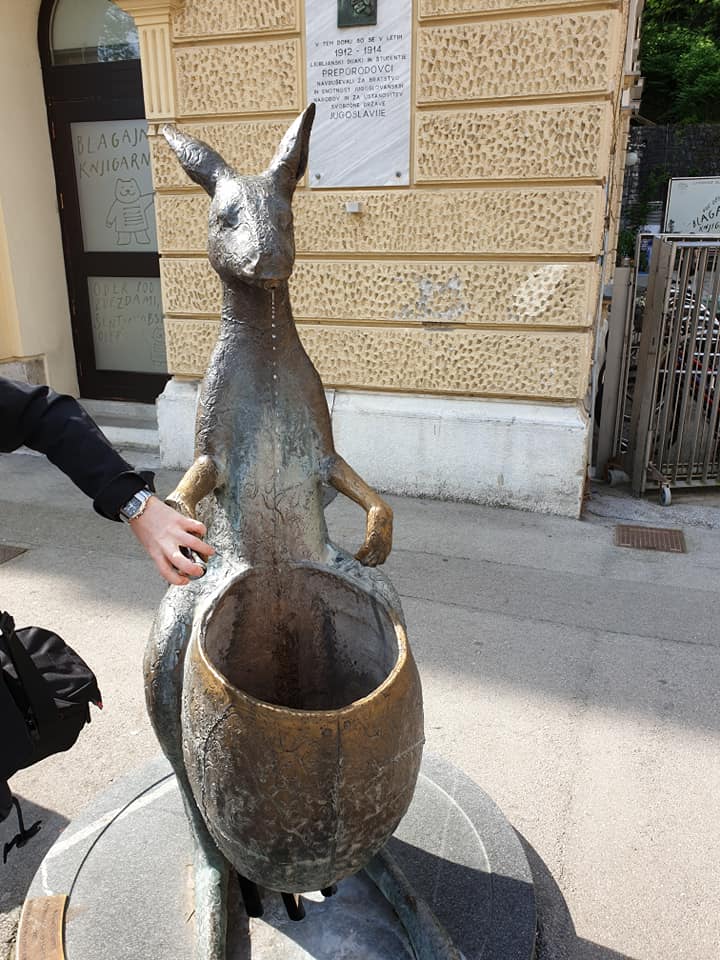
Rather than repeat their excellent work, what follows is an individual appreciation of what turned out to be rather a splendid day, beginning with some liquid refreshment from a rather charismatic water fountain on one of the main squares of the old town.
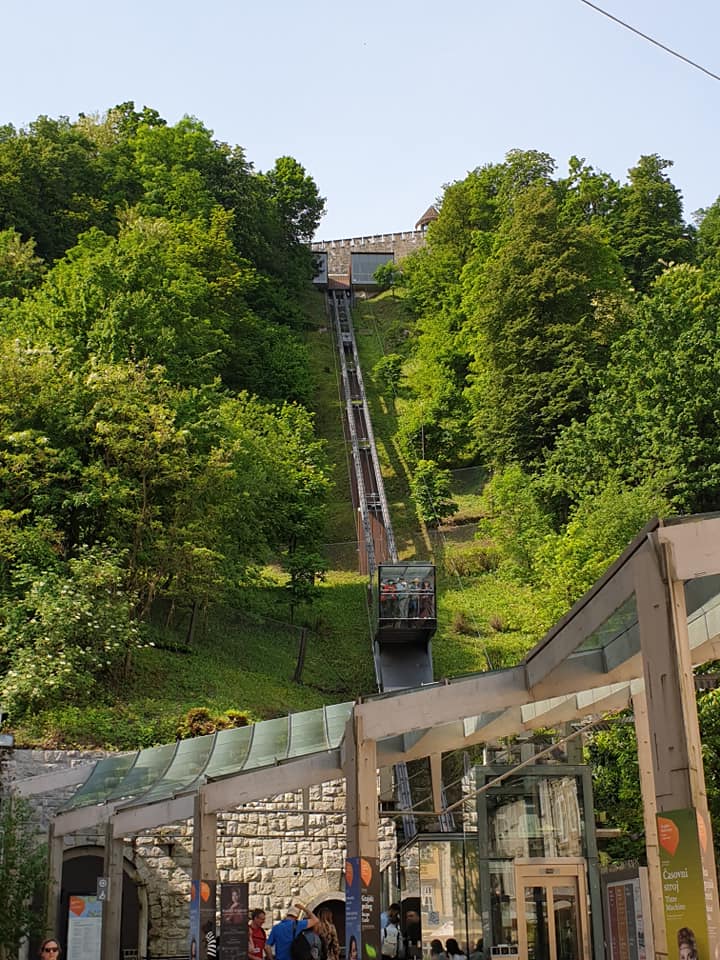
There is no debating the best location for the finest views of the old town and surrounding areas. While we could have walked our jogged through the forest to get to Ljubljana Castle, this little funicular made the ascent a little easier on these ageing bones.
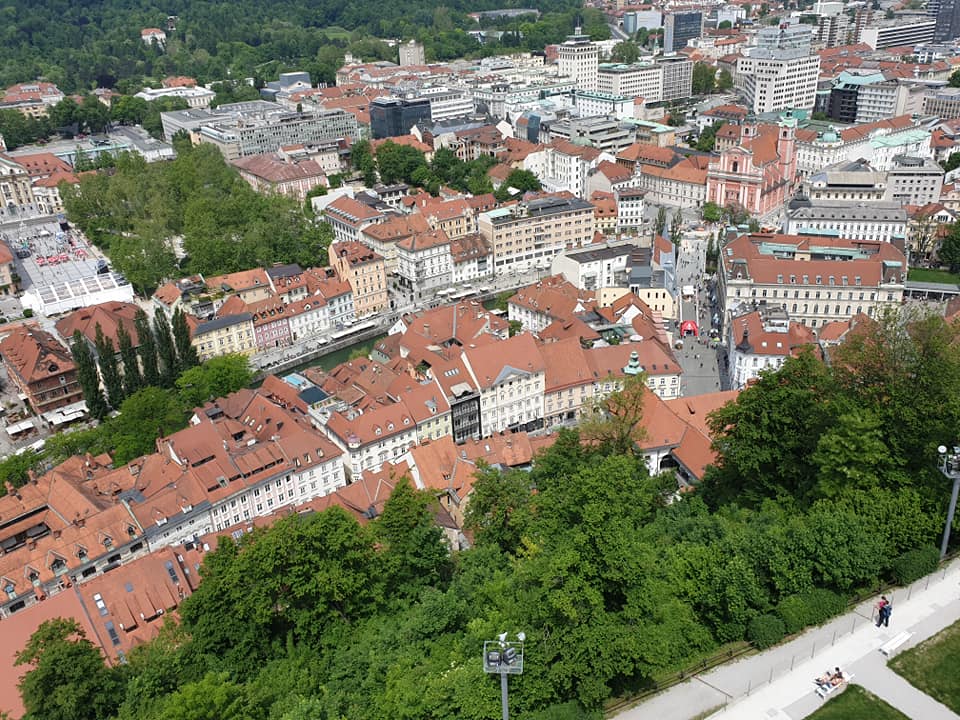
The spiral staircase to the very top of the tower was well worth the effort once we got to the castle, but to read more about the castle itself, I refer you to my local expert colleagues and 25 things to know about Ljubljana Castle.
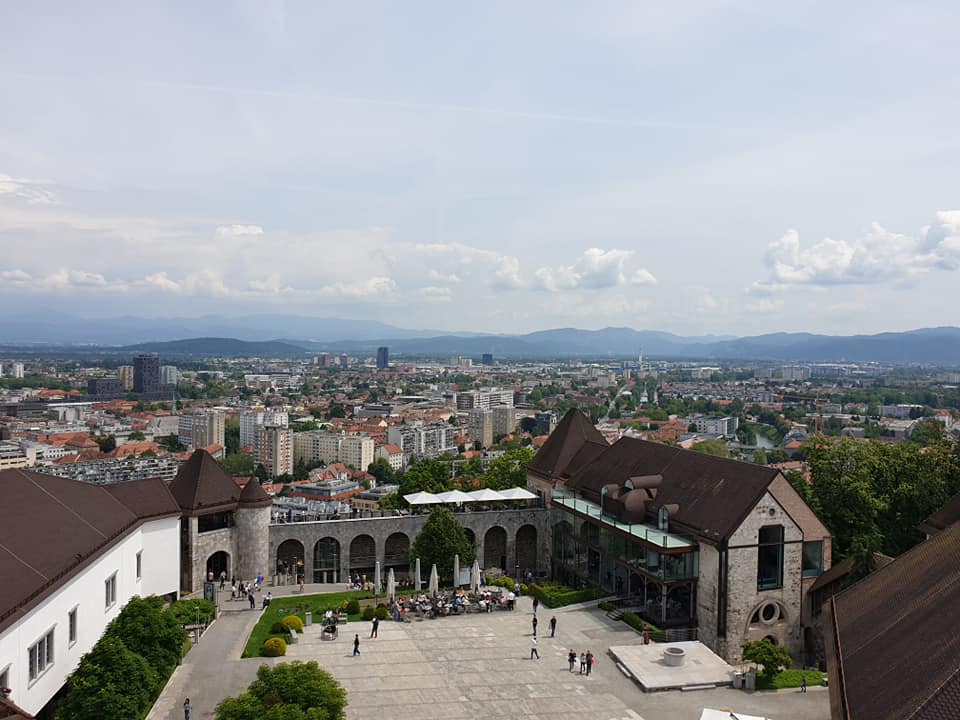
Apart from the views, however, what did strike me about the castle was the flat area below the tower. A superb space and perfect for all sorts of events, concerts and other performances.
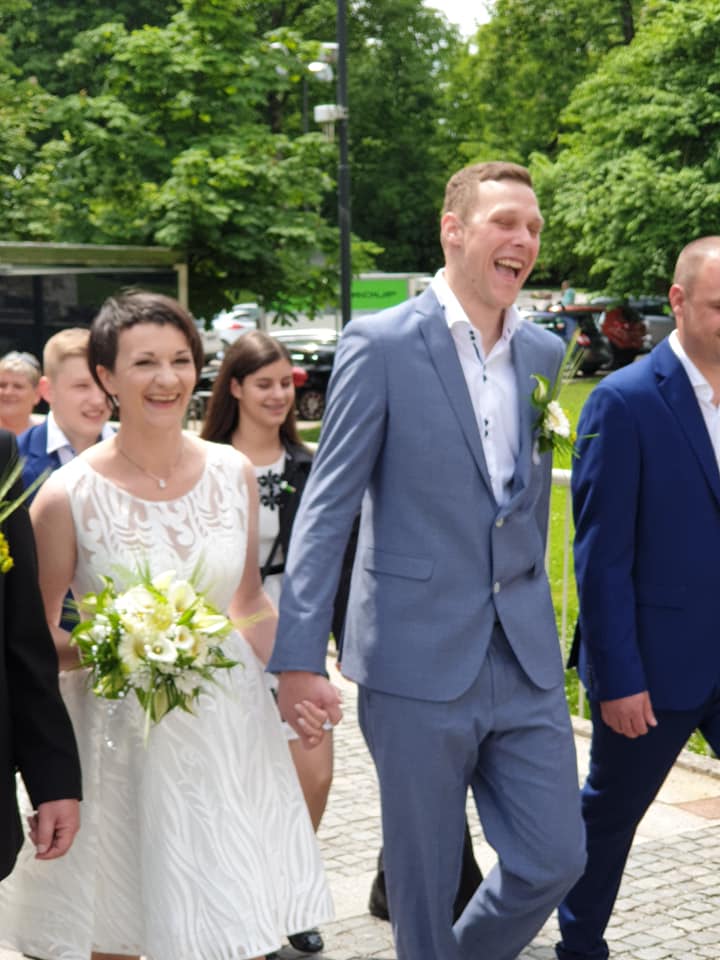
And weddings, or course. The latest happy couple heading to the castle - congratulations.
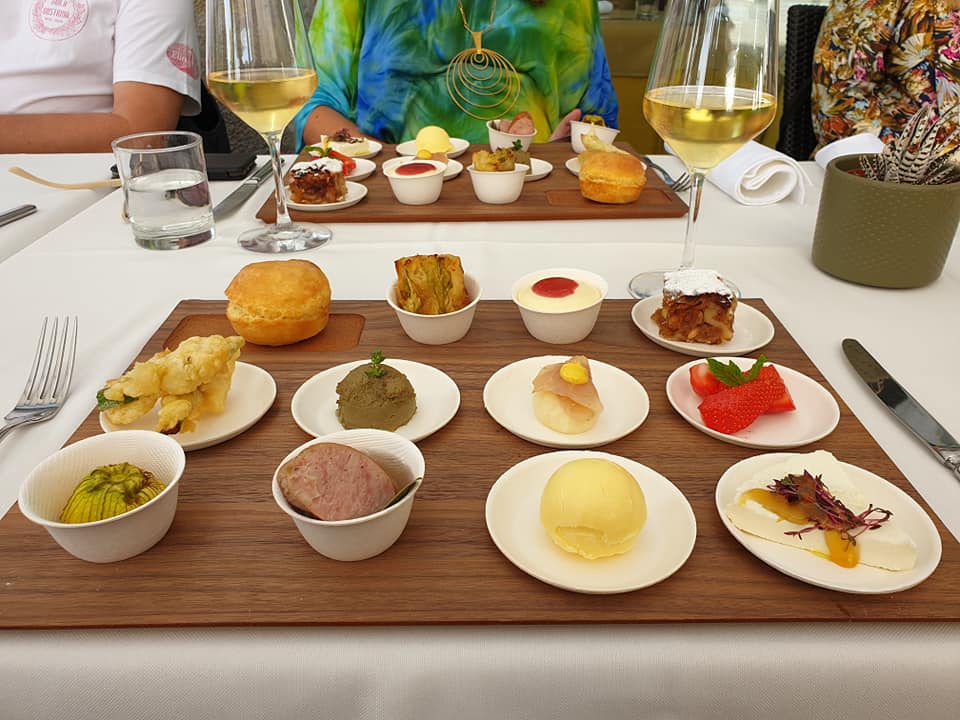
Breakfast at the castle was like one I had never had before, 12 very individual dishes with an array of sweet and salty flavours. And yes, this is a portion for one. I particularly liked the pate and the asparagus tempura, while the strawberries, strudel and honey-covered cheese were also delights. As we discovered the previous day, the Food Bluz project is really taking shape in defining the diversity and quality of cuisine in Slovenia, and there are great plans ahead for Slovenia's role as the 2021 European Region of Gastronomy.
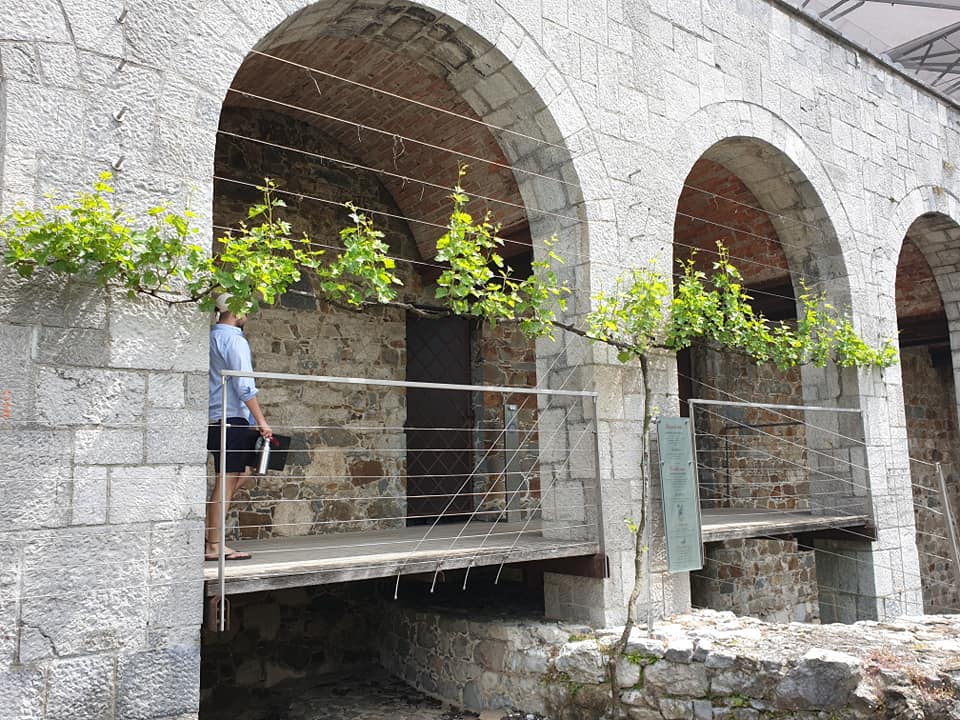
Among Slovenia's many claims to fame is the fact that the oldest existing vine still producing grapes is located in Maribor, something which is celebrated each year in September. Cuttings from the 450-year-old vine were planted in the castle in 1990, and there is now an impressive vine to view.
A vine which is going international. As Total Slovenia News reported last year, clippings were planted in both Pyongyang and Seoul last year, and the plan is to make a united Korean wine from the grapes of both when they ripen.
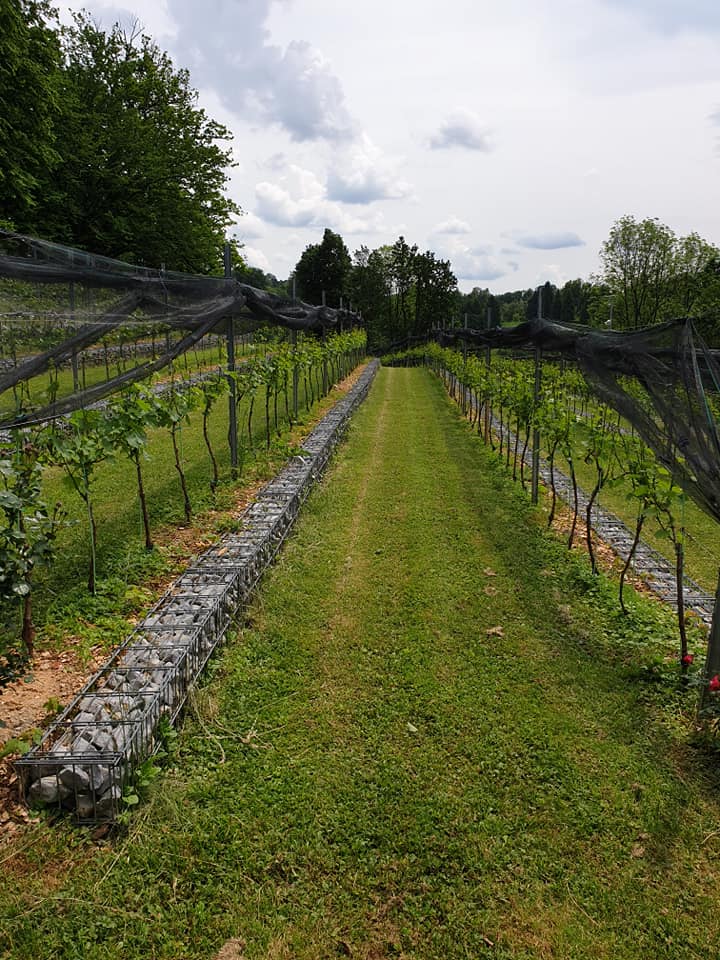
And the castle even has its own vineyard in the hills below its walls. The vineyard had previously been in existence but was resurrected in 2016, with the first vintage in 2018. Each of the vines are labelled by name, in thanks to the benefactors who made the project possible.
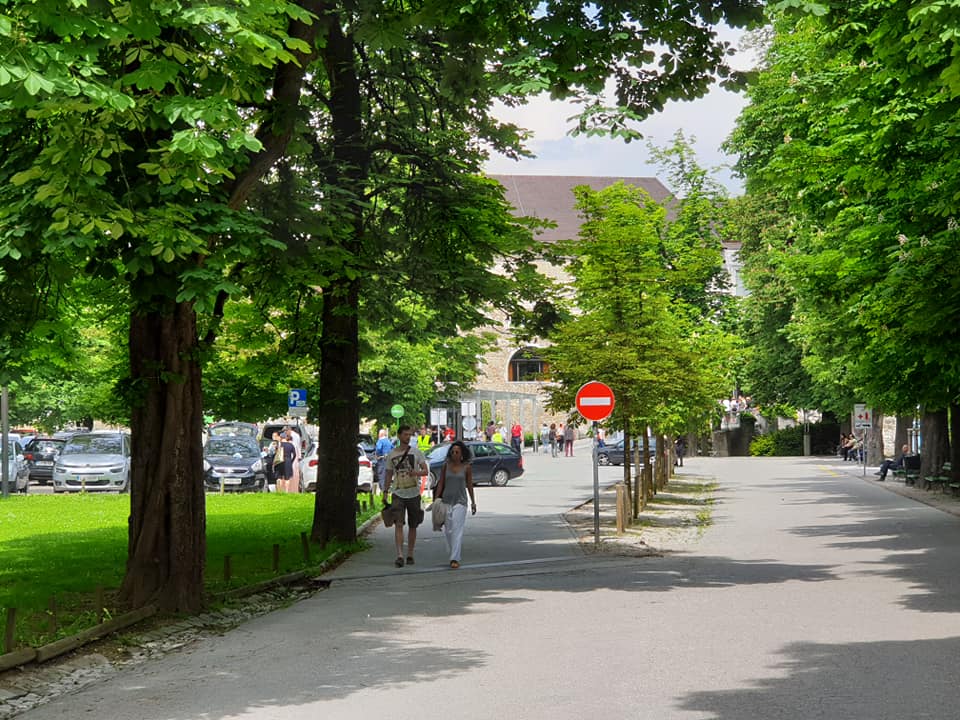
And if you take the short funicular ride up, I heartily recommend you walk down through a green oasis of refreshing nature. For although we might be in the centre of town, Nature and its forest rule. There are plenty of running routes as well, and this area is a perfect escape from the summer crowds, as well as (I can imagine) being idyllic in all four seasons.
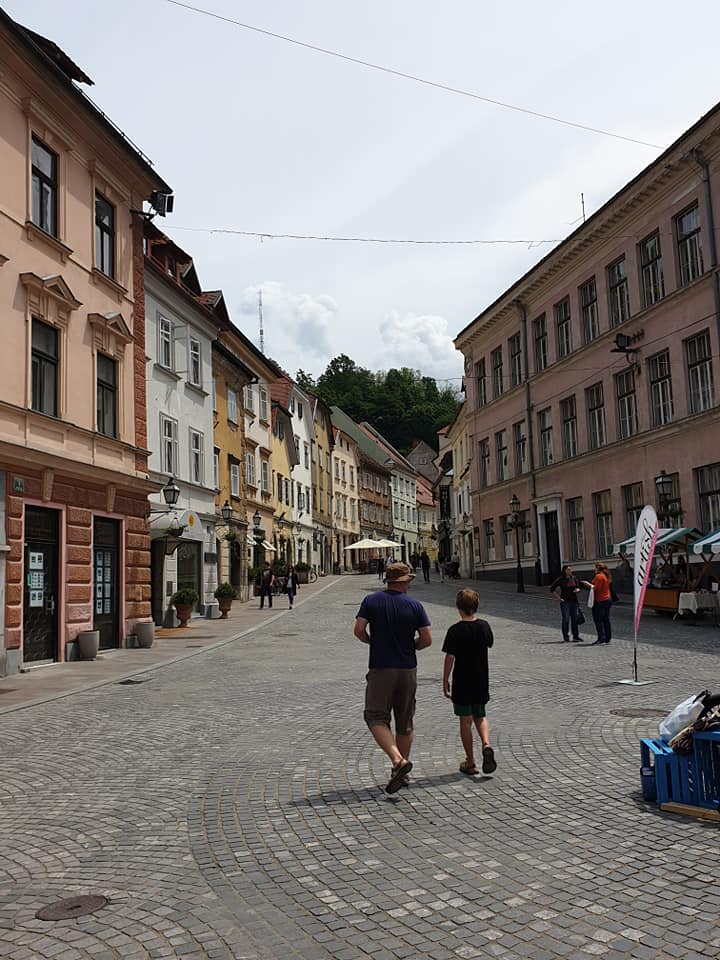
I don't think I could ever tire of the old town of Ljubljana. So compact and picturesque, And there were a few surprises pointed out by our guide. This road, for example, was the main thoroughfare connecting Zagreb to Ljubljana until 1959. How things have changed.
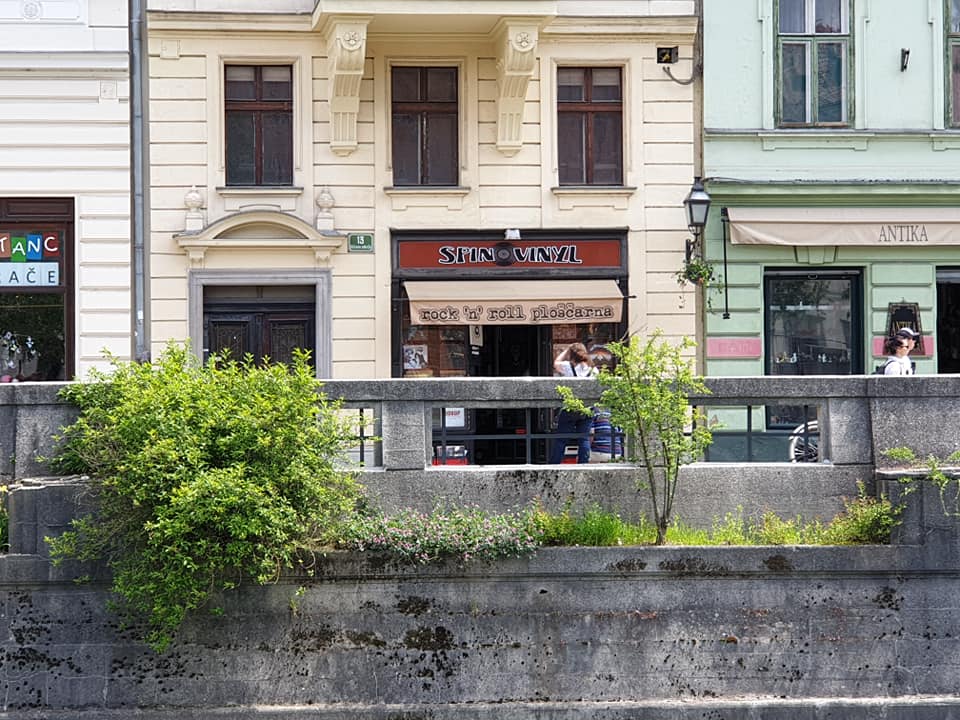
Although Ljubljana is getting discovered, there are plenty of quaint touches which show that over-commercialisation has not arrived on masse. Yet. Where else in Europe would you find a prime waterfront store selling vinyl records, for example?
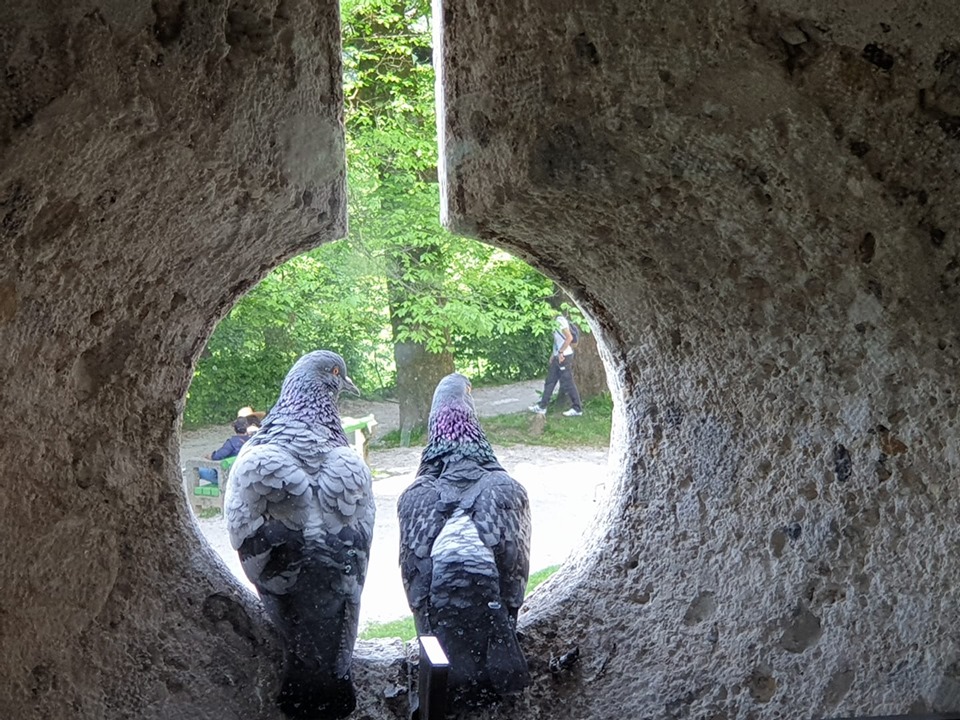
It is a glorious people-watching destination, an activity endorsed by the local birdlife observing the daily goings on at the castle.
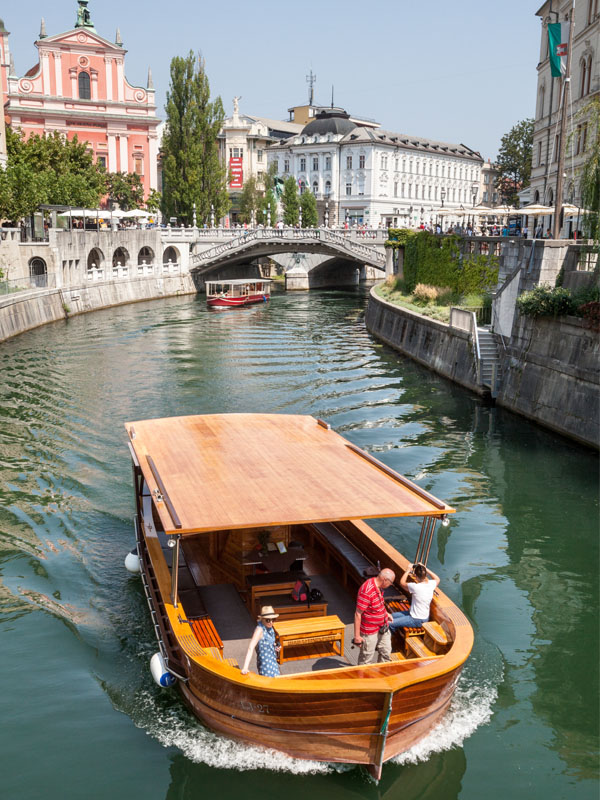
The highlight of the organised tour for me was the river boat trip. Our host was the Ljubljanica, the only hand-made wooden boat on the river. And what a joy she was.
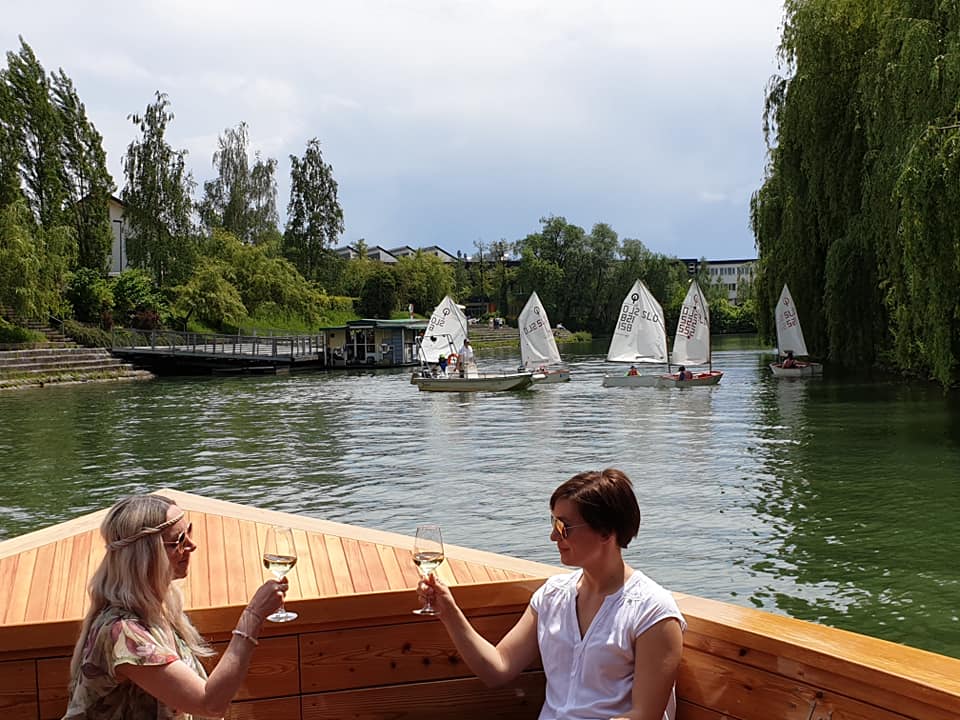
Some strawberries and grapes washed down with a glass of bubbly, and we were away.
What struck me was just how quickly we were out of the city and totally immersed in Nature. 3-4 minutes max.
Observing life by the river and the various ways people were taking advantage of it was wonderful, all to the slow rhythm of the Ljubljanica. You can find out more about the boat ride (cost just 10 euro, children under 6 free) on the official website.
It really is a magical way to experience the city, especially the return journey into the historic old town.
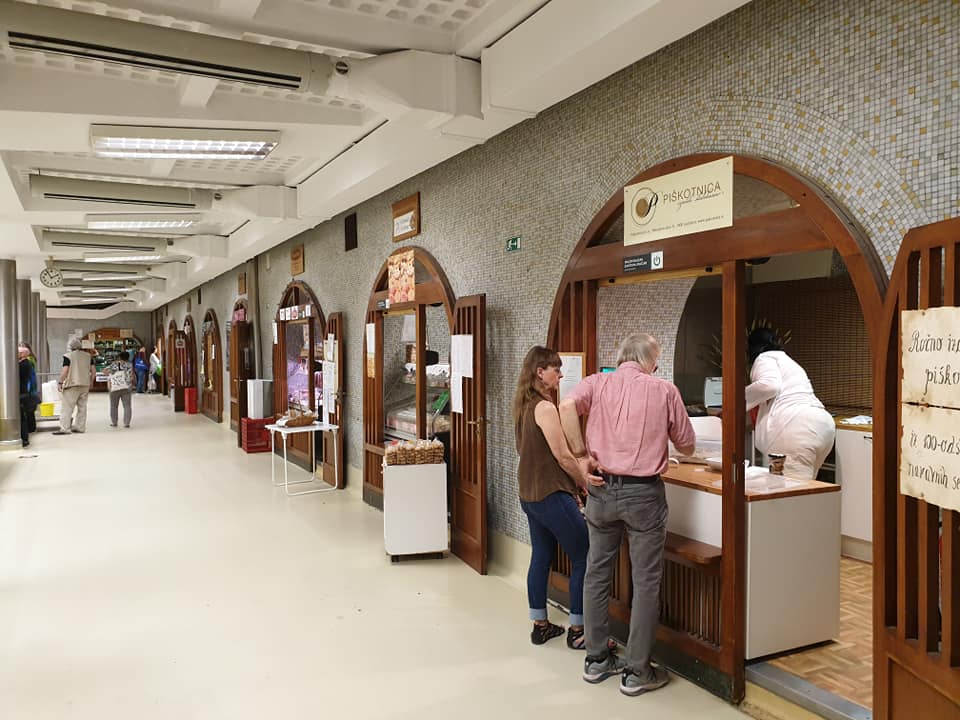
A wander around the huge indoor market, which had something for everyone.
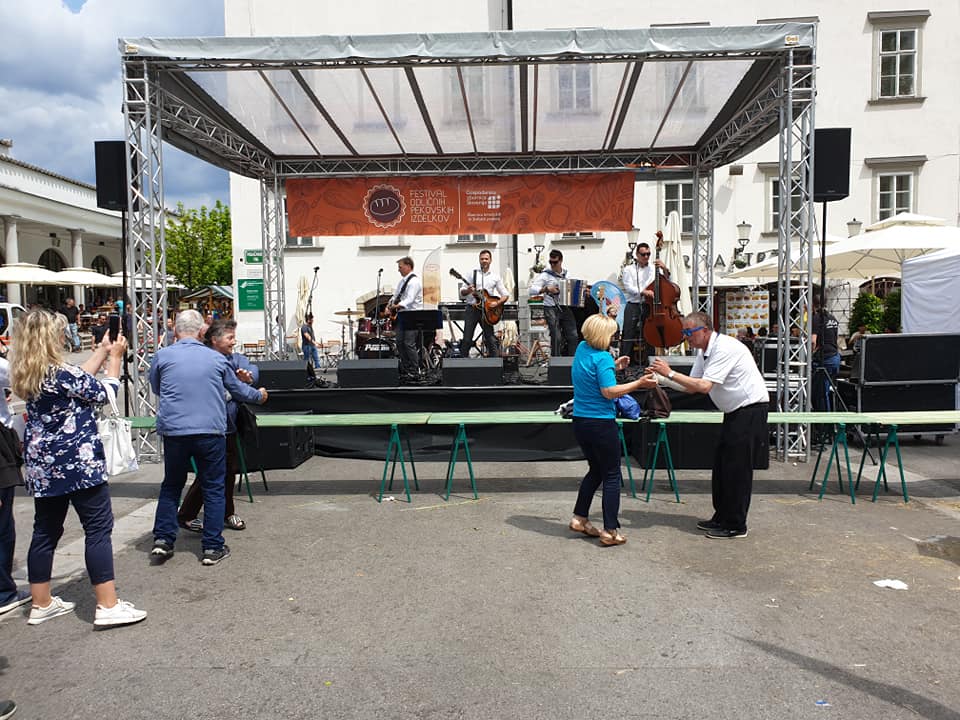
A wander through the historic streets and squares, which were vibrant indeed. Slovenia, Full of Life in late May.
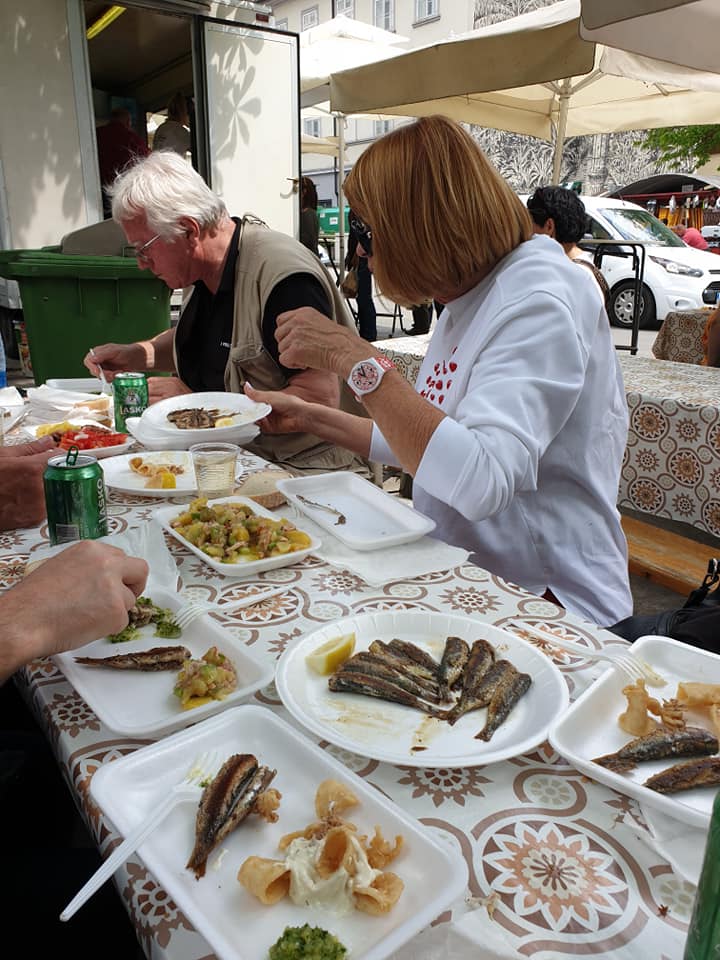
And the perfect way to end the tour, just as it had begun. With great, fresh food. The street food scene of Ljubljana was one of many pleasant surprises from this majestic city less than 2 hours drive from Zagreb. It is a divine place. Learn more from the official Ljubljana tourist board website.
Looking to learn more about Slovenia? Why not follow our sister site, Total Slovenia News?
Meet the Neighbours: Ljubljana's BTC City within a City, and More.
May 27, 2019 - Continuing TCN's tour of neighbouring Slovenia with the Association of Slovenian Travel Journalists last week, a visit to the gourmet BTC City in Ljubljana.
Moving from the island of Hvar to a village near Varazdin has certainly given me a different perspective on life in Croatia, and one of the main benefits has been the ability to explore both continental Croatia and some of the neighbouring countries. With Budapest less than 3 hours by car, Graz just 90 minutes, and gorgeous Ptuj, the oldest town in Slovenia, a short 30-minute drive from our front door, there was certainly plenty more choice at the weekend. But there was one city which really captured our hearts.
Ljubljana.

Although I still didn't know Ljubljana well, its picturesque old town divided by the river was one of the most beautiful capitals I have seen, and we have had plans to explore further later this year. And so it didn't take long for me to accept an invitation for a three-day tour of the country from my Slovenian travel journalist colleagues. If you are going to explore a destination, they what better way than in the engaging company of the local experts?
The trip was organised into three separate parts. Yesterday, I wrote about a region that was previously unknown to me, but one I shall be visiting again soon - the delightful Big Berry lifestyle resort on the banks of the River Kupa on the border with Croatia, and the fascinating Bela Krajina region. Looking at the programme, and mainly due to my ignorance, I was not sure what the second day would have in store, as it seemed to be centred on a shopping complex called BTC City in Ljubljana, sometimes known as Bitcoin City. Somewhere in the back of my head, I knew that there was a huge shopping mall in the Slovenian capital, but that was as far as my knowledge went.
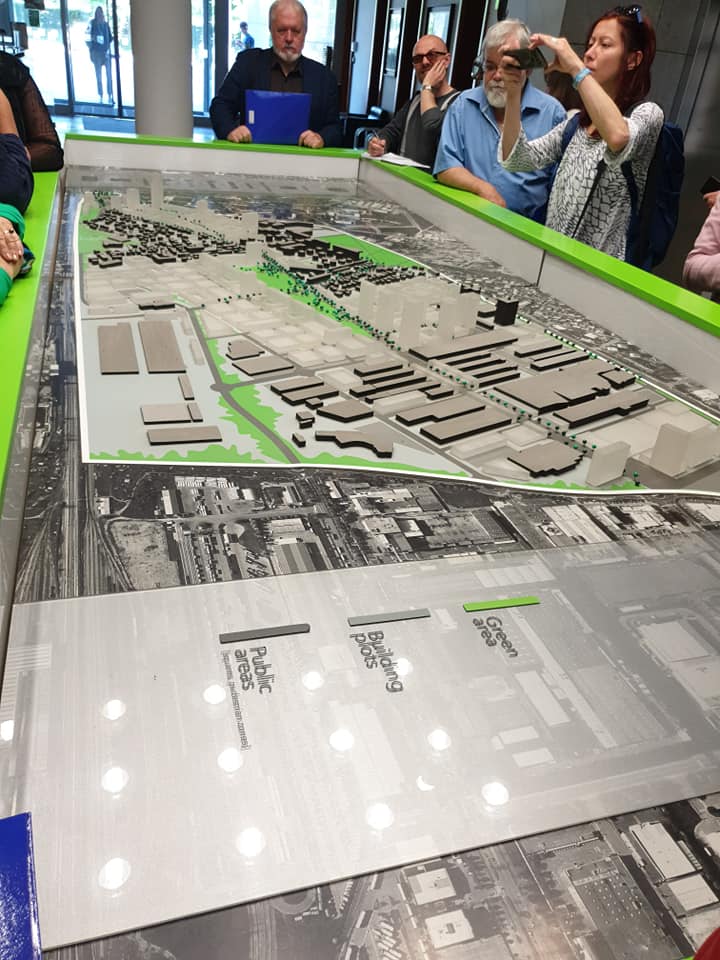
it was quite an education, as well as a fantastic lesson both in urban regeneration and environmental planning for the future.
At around 400,000 m2, it truly is a city within a city, and I wouldn't be surprised if it was bigger than the old town in size. What is certain is that it is one of the largest shopping and entertainment malls in all Europe, and much, much more than a simple shopping experience. What makes it all the more impressive is its transformation from its former life.
Today's BTC City started life back in 1954 offering warehousing space. As the business expanded, so too did the area's importance in former Yugoslavia, and by 1975, it had become the largest goods and transport centre in former Yugoslavia, and it was known as Blagovno Transportni Center Ljubljana, or BTC for short. Today BTC City consists of more than 450 shops with 10,000 brands, an Adrenaline Park, Aqua park with 17 pools and 15 saunas, more than 70 bars and restaurants, including a great street food square and vibrant open market, multiplex cinemas, a casino, and lots of activities for the kids.
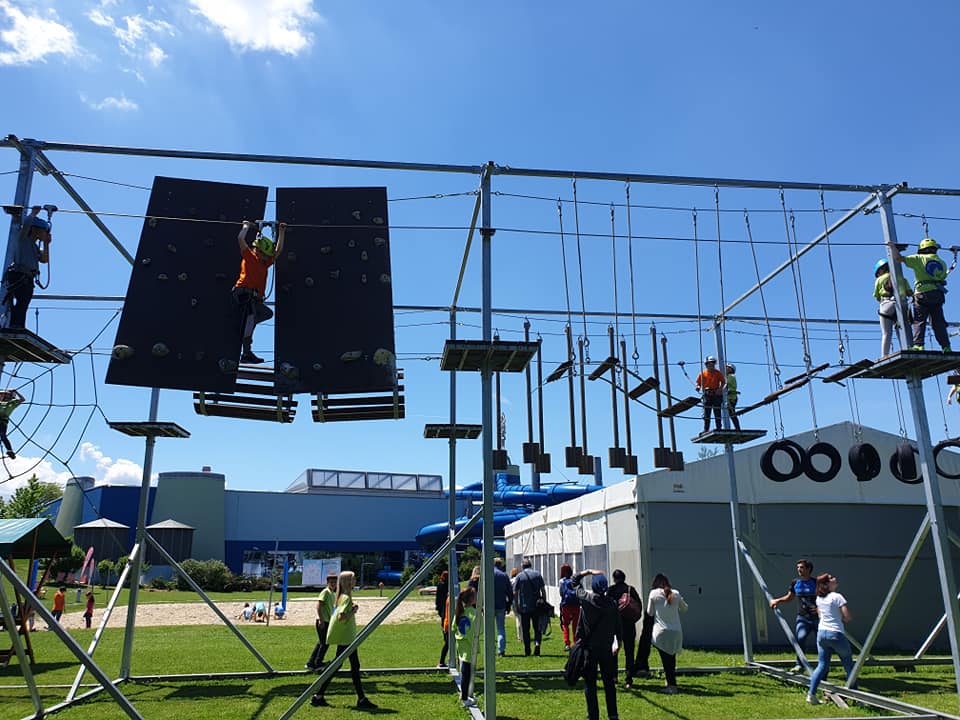
Located just off the Ljubljana ring road, it is very accessible, and if the old town is the main tourist attraction, BTC City is where the city goes for food, shopping and entertainment.
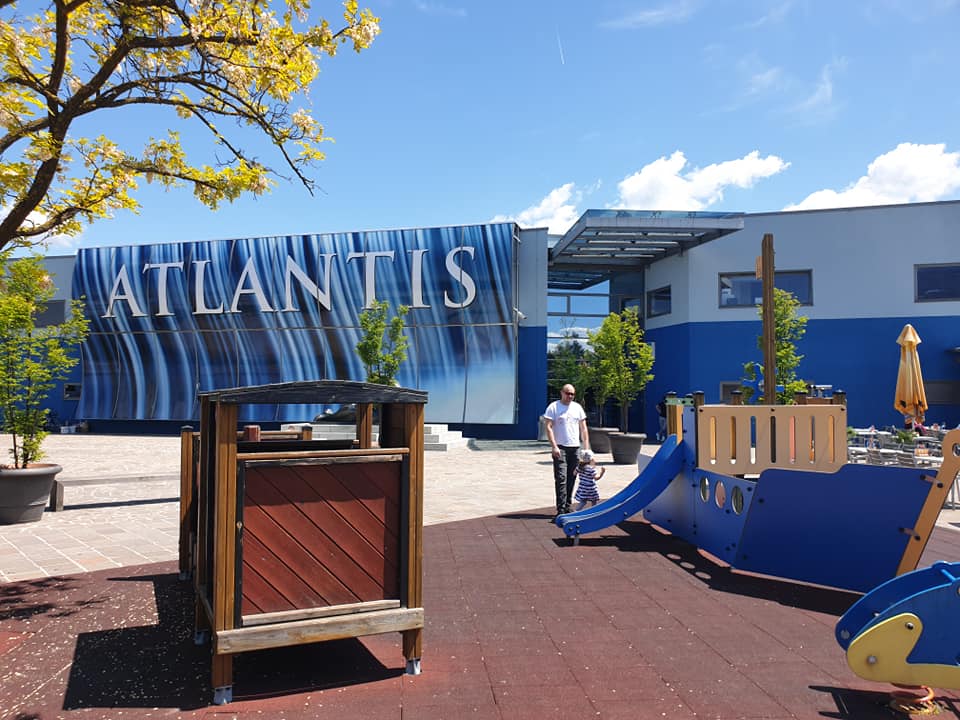
The BTC City management team have been very active in adding content to the city, to make it much more than just a shopping destination. There is, for example, the Franja BTC City Cycling Marathon in June, as well as the Crystal Palace run in November, to the top of the tallest building in Slovenia of the same name.
And, as you can see, the views from the top are quite divine, overlooking the greenness of this greenest of lands.
BTC City is sometimes called Bitcoin City, and there has been some excitement in the cryptocurrency world that a city has been built in Slovenia for the leading cryptocurrency. The reality is a little different. It is certainly true that Slovenia is one of the more advanced European countries when it comes to blockchain and cryptocurrencies, and Bitcoins are accepted in some of the BTC City stores, but not all. It is also true, as the link above explains, that there has been some government endorsement of 'Bitcoin City', but the main association between the two seems to be that they share the same three letters, BTC. Having said that, should the Bitcoin story progress, I would expect BTC City to be in the forefront of change, as the development is very forward thinking.
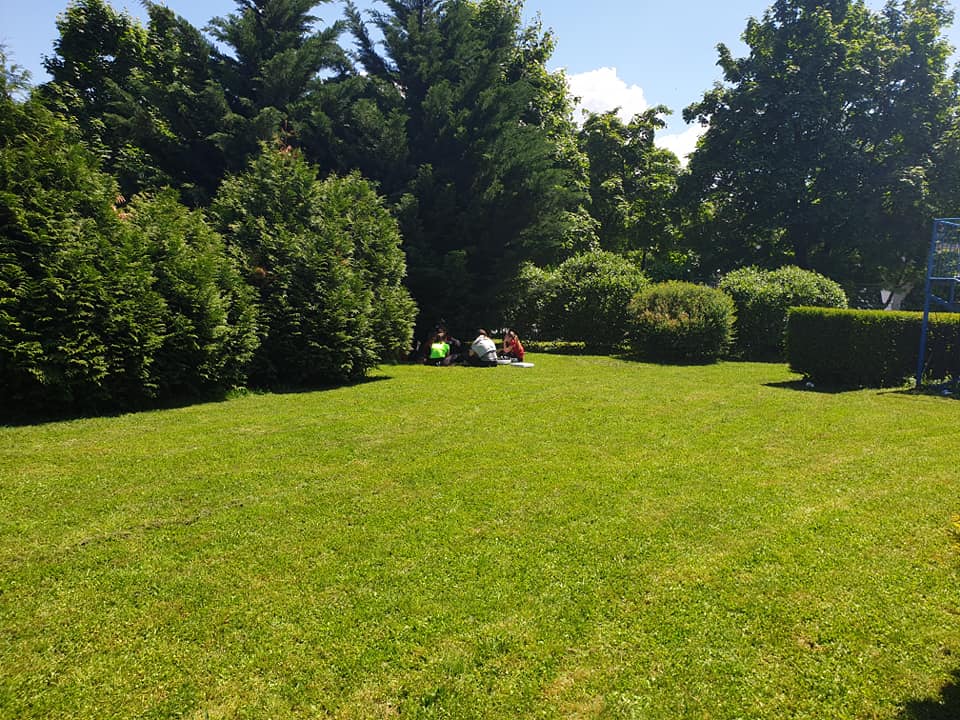
Another key aspect of BTC City is its gourmet offer. with more than 70 restaurants and bars offering 30 international cuisines, BTC City is a great foodie destination. This diversity has been captured in a concept called Food Bluz, an initiative to establish BTC City as a foodie destination. I must confess that I really liked Slovenia's approach to promoting gourmet tourism. In addition to an excellent bilingual book promoting Food Bluz, written by Slovenian gourmet expert, Professor Janez Bogataj Ph.D and edited by Maja Oven, Slovenia will become the European Region of Gastronomy in 2021. And, as we were to find out, there was plenty to taste during our quick tour of a fraction of what was on offer.
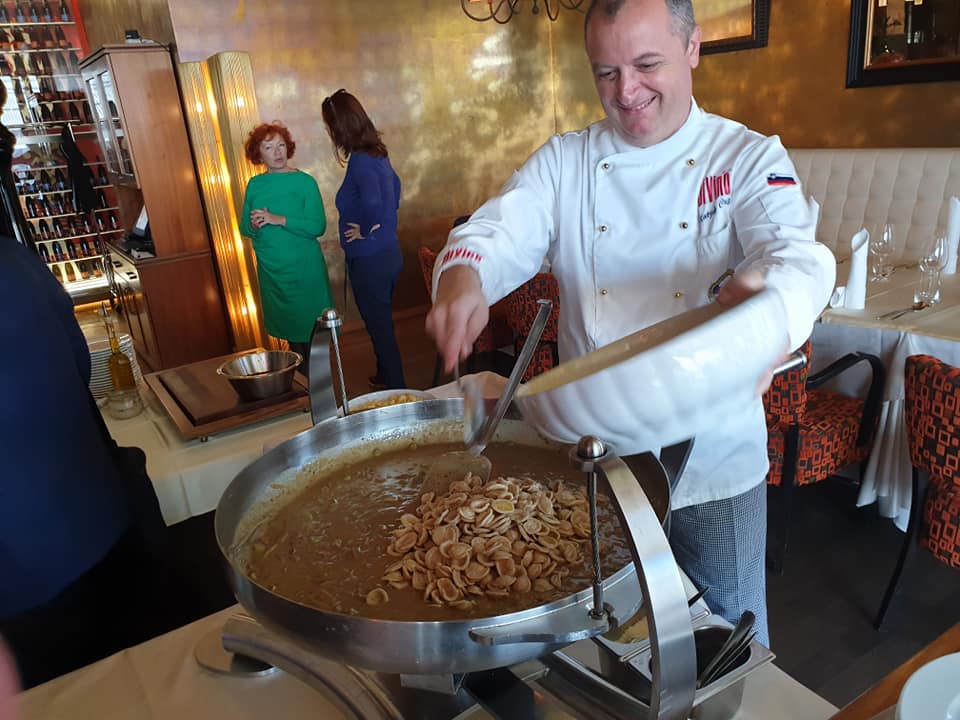
We made a very strong start with a glass of bubbly at diVino, while watching head chef and world pasta vice-champion, Matjaz Cotic, preparing his Mediterranean dishes from locally sourced ingredients.
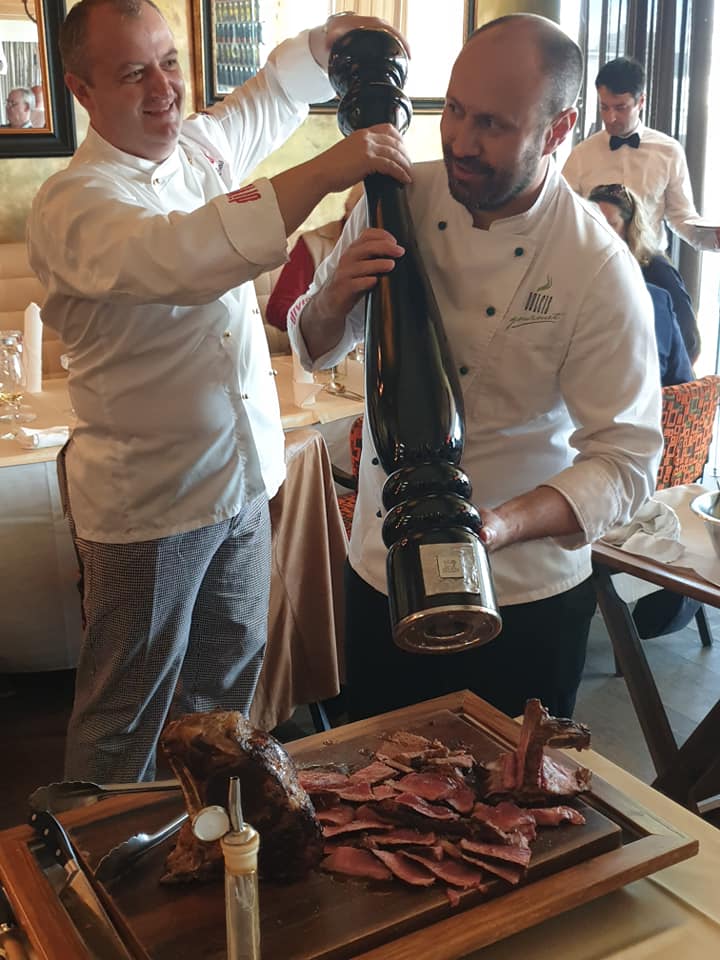
And we could not move on before adhering to the diVino motto 'to beef or not to beef' - this Tuscan beef was sensational.
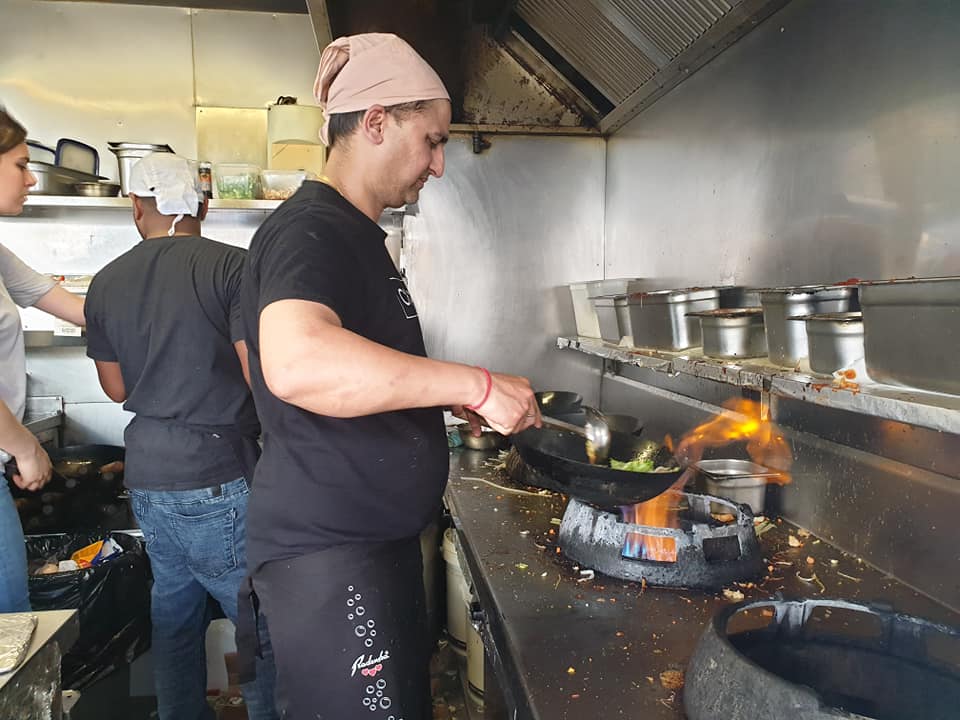
There was no time to linger, and soon we were off across a rather fun Street Food Square, where the aromas of a plethora of cuisines filled the air. Some Asian spices got my heart racing, Asian cuisine being one of the things I miss in Croatia.
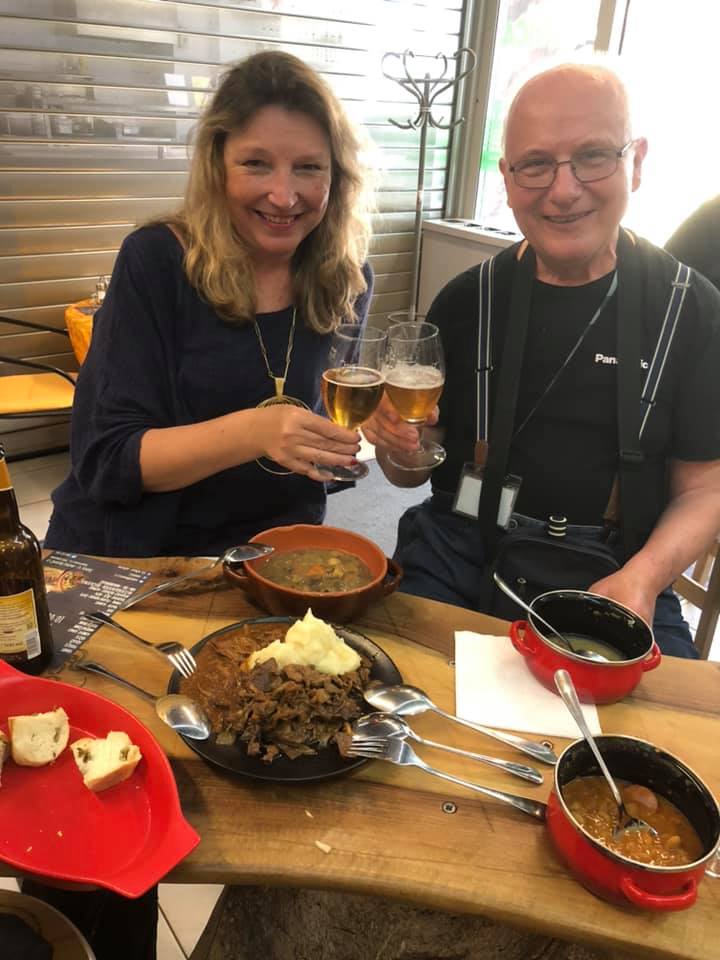
We settled on a lovely locale called Skrniclj, whose hearty portions of tripe, liver, goulash and mushroom soup were well received.
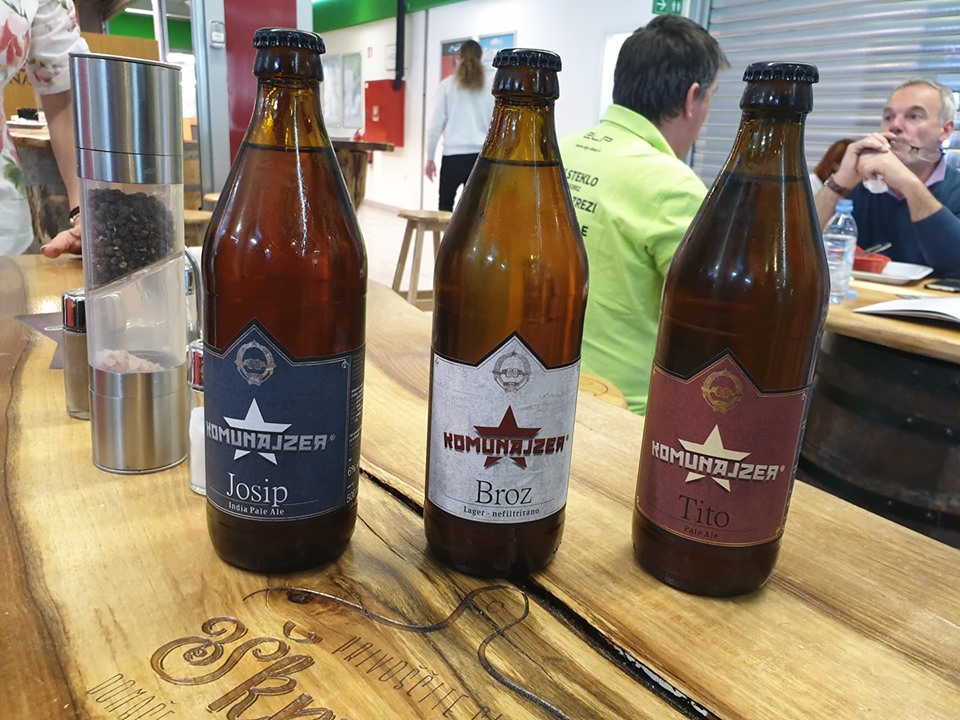
And the beer selection was rather interesting. A Slovenian brewery cashing in on the name of the ex-President of Former Yugoslavia.
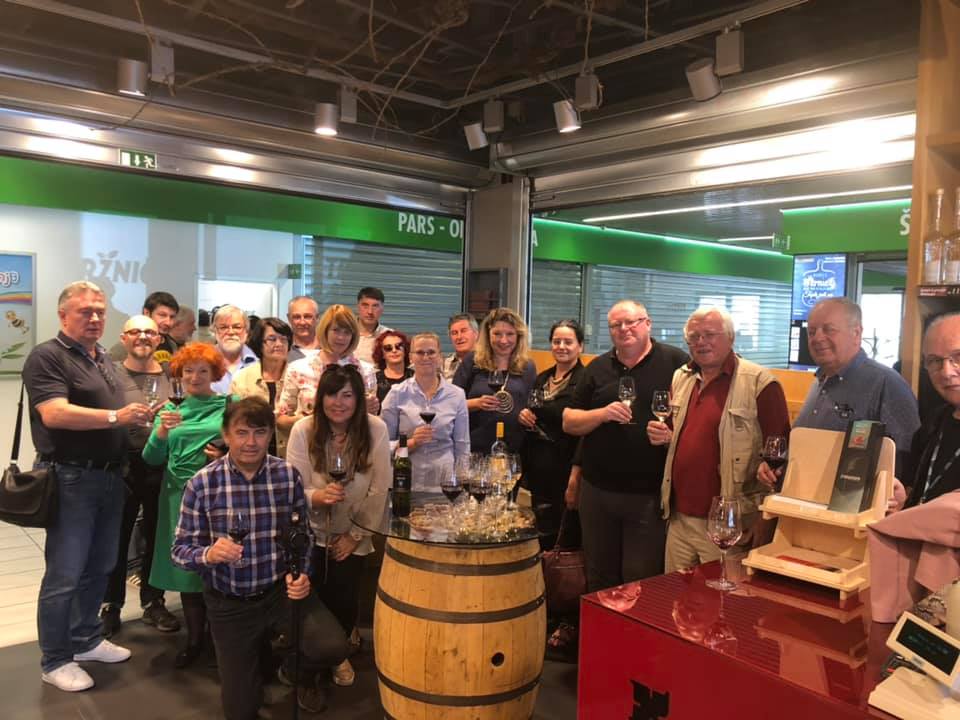
From beer to wine, as we popped next door to Hisa Refoska for a refreshing glass of Slovenian Malvazija, an indigenous Istrian grape variety it shares with its Croatian neighbour.
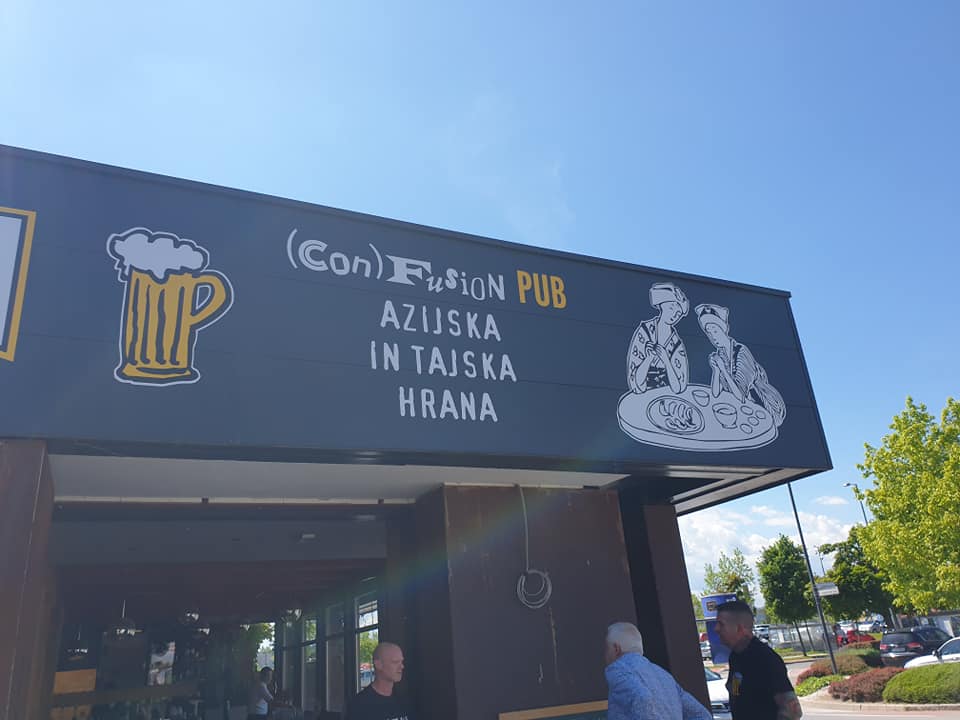
From wine back to beer, with a hint of Asian fusion. I was not the only one potentially getting (con)fused.
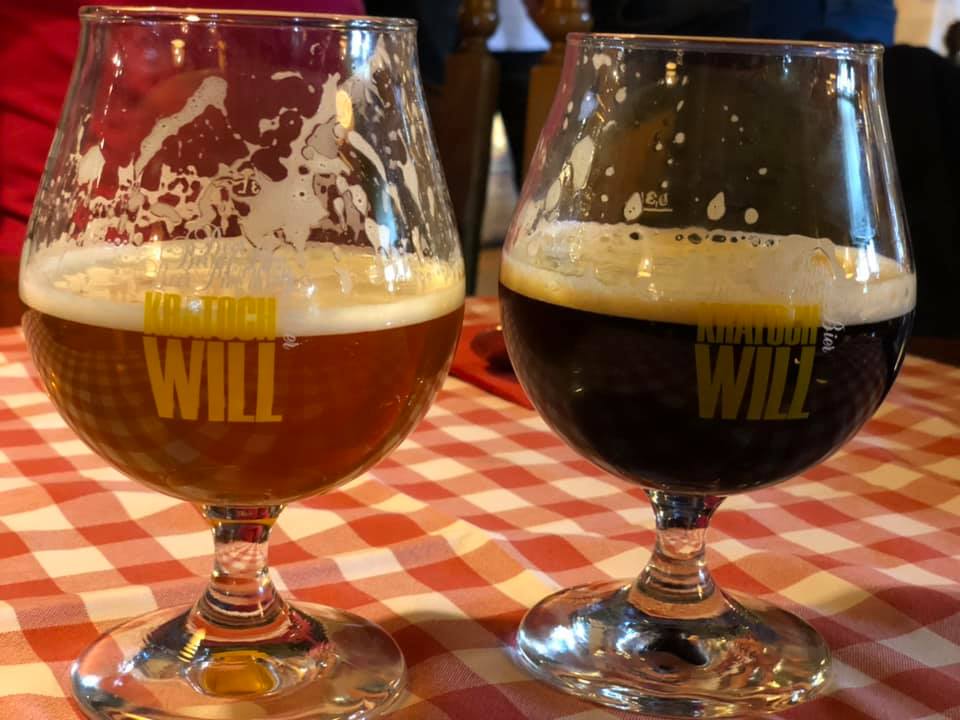
The Kratochwill beer hall is probably the largest in all Ljubljana, with 400 seats inside and 200 more outside. It is also one of the oldest restaurants in BTC City, with a great range of experimental craft beers to try.
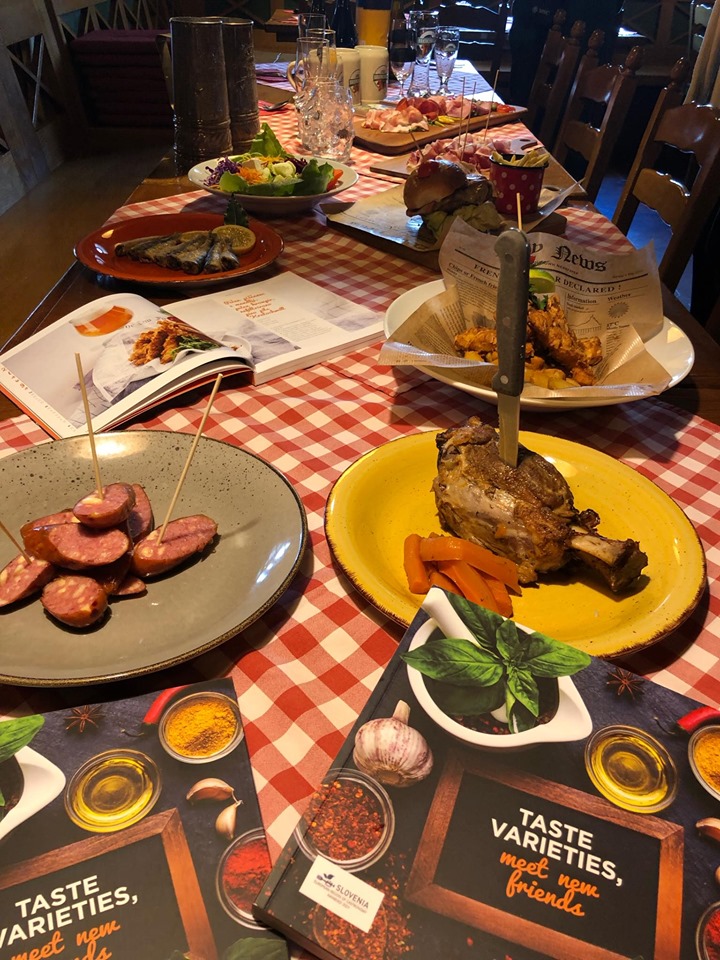
There was plenty more on offer to eat, but there are limits to what even the most dedicated correspondent can consume without a little exercise between meals.
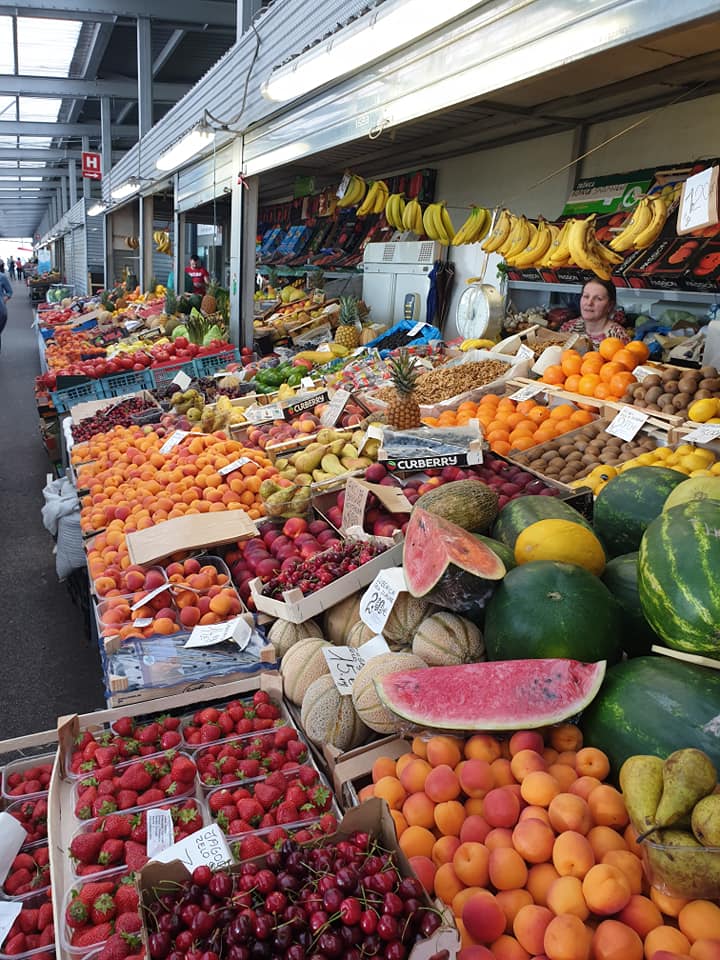
I particularly liked the open market - such a great selection of the freshest produce.
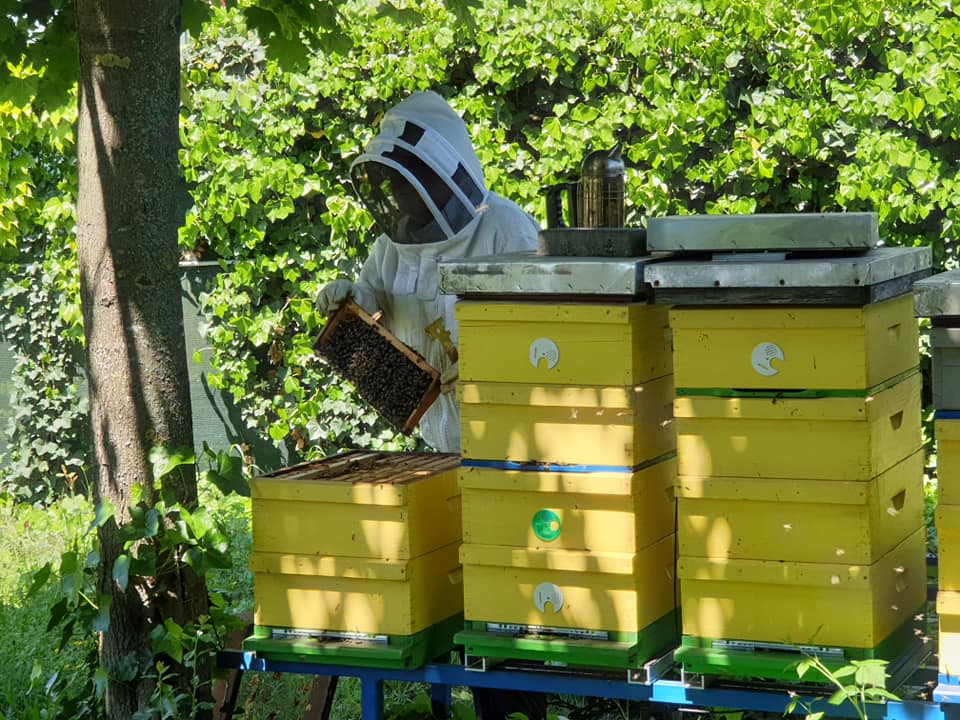
Slovenia is a nation of beekeepers, and so it was no surprise to come across town beekeepers tending to their hives while others shopped, played, ate and drank.
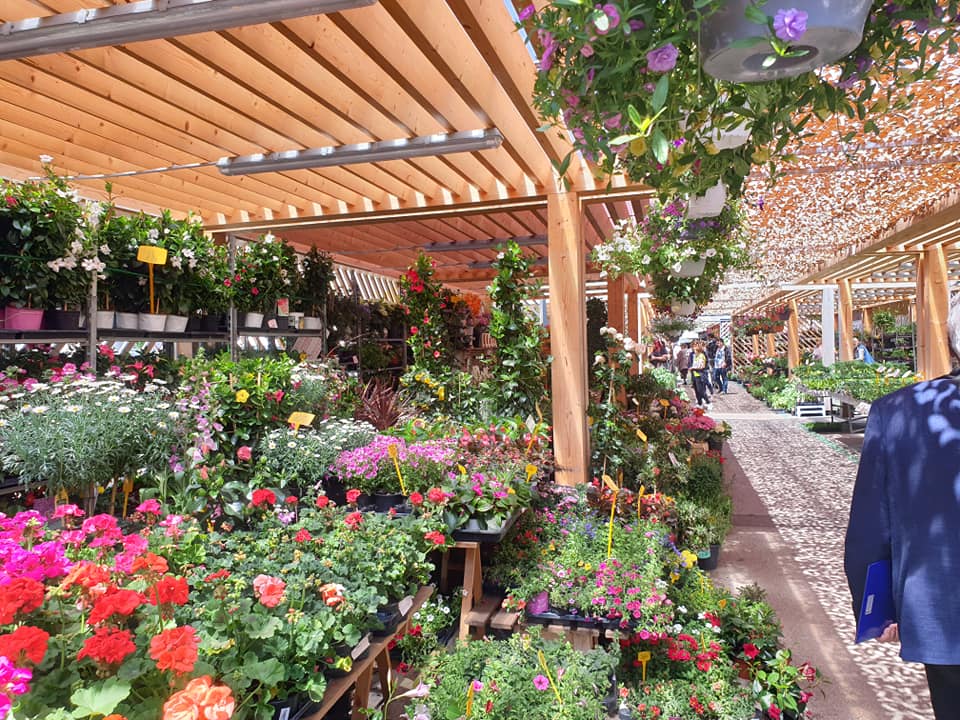
And if you are in the mood for romancing your wife with flowers, you have come to the right spot.
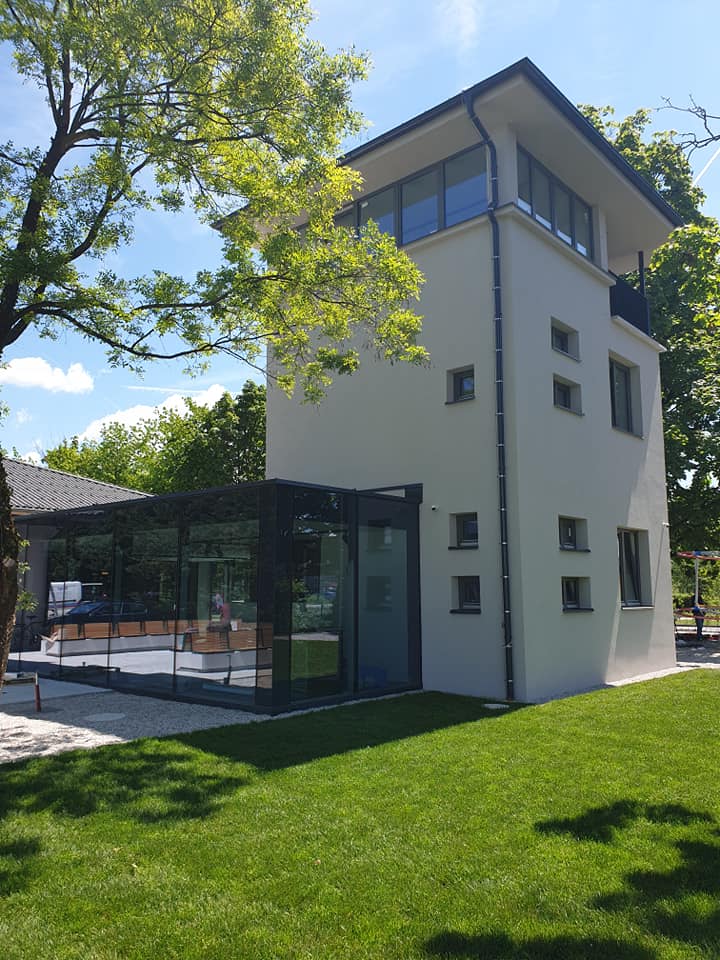
I also liked the way BTC City preserved the heritage of the past. Here is the former control tower of the old Ljubljana Airport, completely rebuilt and soon to be operating as an upmarket ice cream parlour called Cacao.
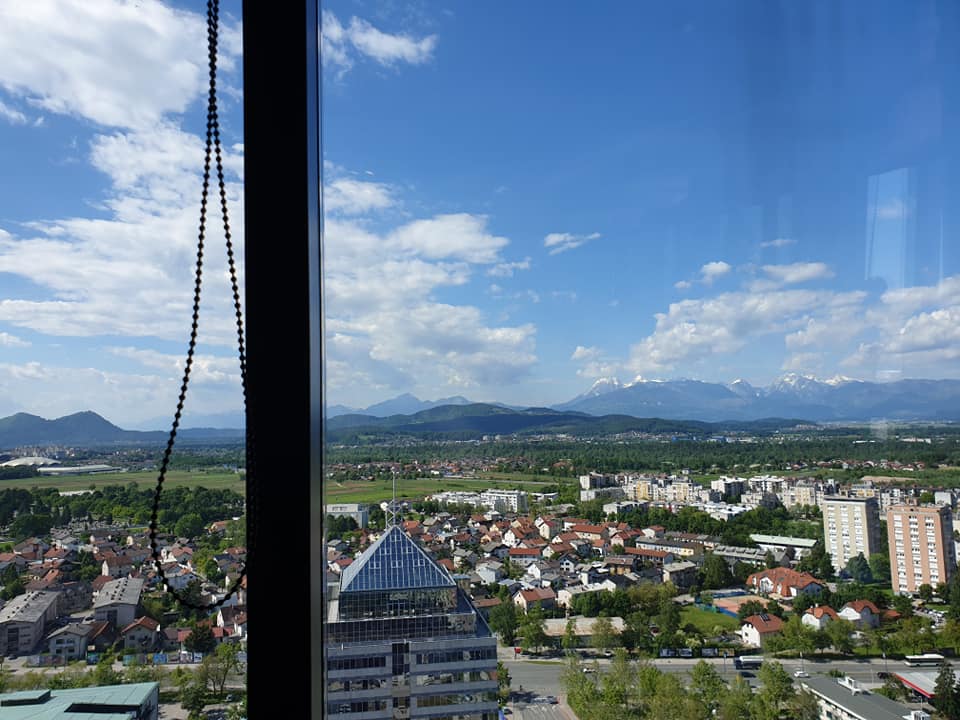
Our tour concluded on the 20th floor of the tallest building in the country - Crystal Caffe. Rather than running up, as they will in November in the Crystal Palace race, we took the lift, to be rewarded with fabulous views of this most photogenic country.
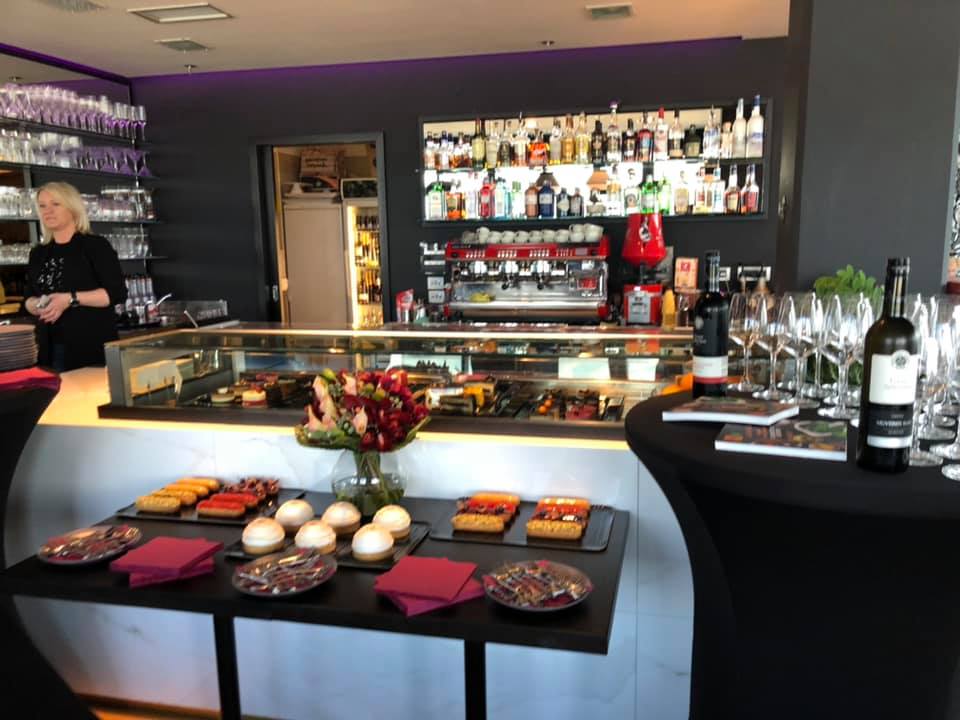
And cake!
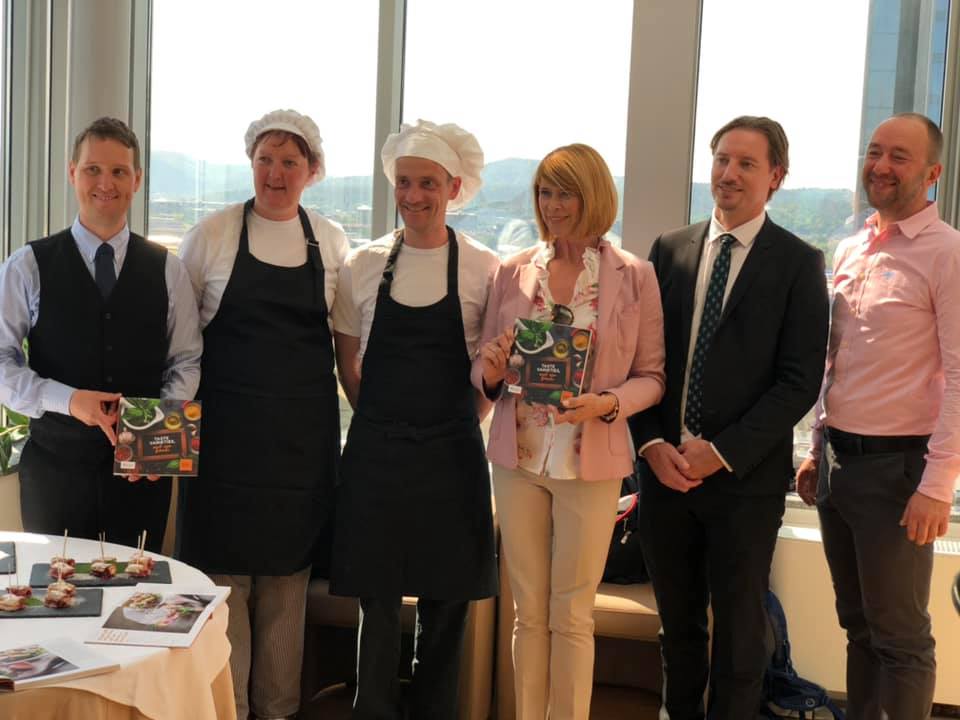
A day which started wondering what there would be to see in a shopping complex ended with a deep appreciation of this fully integrated city within a city - a tourist destination in its own right. And a city within a city which is using its various attractions to great effect. With its catchment area of several million consumers and the most comprehensive offer in the region concentrated in one place, BTC City offers an excellent tourism, gourmet and shopping experience in its own right.
Combine it with the historic old town of Ljubljana and it is outstanding.
To learn more about BTC City, visit the official website.
Team from Zagreb's FER Wins SIM(P)ATIC PLC+ Challenge 2019 Competition
As Poslovni Dnevnik writes on the 17th of May, 2019, the regional student competition, held at the Faculty of Electrical Engineering and Computing in Zagreb, marked the completion of the SIM (P) ATIC PLC + Challenge 2019 project.
This project, initiated by the student association EESTEC and supported by the faculties of electrical engineering in Croatia, Slovenia and Serbia, as well as by no less than Siemens, provides the region's young future engineers with a more detailed insight into the issues that engineers usually encounter in industrial automation in order to better prepare for such work out there in the real world.
Three winning teams, one from each country, as well as the overall regional winner were selected. The winning team from Croatia consists of Karlo Hercigonja, Ivan Ratković and Nikola Benazić from the Faculty of Electrical Engineering and Computing in Zagreb, from Slovenia, the winners were Urban Aravs, Jernej Štremfelj and Tina Vindiš from the Faculty of Electrical Engineering in Ljubljana, and from Serbia, the team consists of Uroš Rakonjac, Petar Kovačević and Dejan Bogdanović from the University of Electrical Engineering in the Serbian capital of Belgrade. The regional winner of the competition is the team from Zagreb, Croatia.
Namely, the SIM (P) ATIC PLC + Challenge 2019 competition started back at the beginning of April with theoretical part of the workshop, where university lecturers from the Faculty of Electrical Engineering from Zagreb, Belgrade and Ljubljana held lectures otherwise not covered by the curriculum. In the next phase, the student teams solved the task by which the best two teams in the country qualified for the regional final in Zagreb. Within this competition finale, the finalists presented their respective solutions of the additional part of the task. Each team had ten minutes available to them for their presentations and five minutes to answer the questions from panel members.
Significant knowledge in the field of industrial automation was also demonstrated by other teams, all judged by a panel consisting of three experts from each country.
Each member of the panel evaluated teams from neighbouring countries in the categories of the quality of the created program and their presentation skills. The Croatian members of the panel were prof. dr. sc. Igor Erceg (FER), mr. Sc. Tomislav Pavić (A & C Automation Adria) and B.Sc. Marko Bunić (Siemens), while from Slovenia and Serbia, there were two university professors and one Siemens representative.
"This competition is an excellent example of synergy between faculties, students and economics. Siemens wants to support projects that encourage the development of professional and practical knowledge of future engineers from this area because we're also strategically focused on the areas of automation and digitisation, which were the cornerstone of this competition,'' said Medeja Lončar of Siemens at the award ceremony.
Make sure to stay up to date by following our dedicated lifestyle page for much more. If it's just Zagreb you're interested in, give Total Zagreb a follow.
Zagreb and Ljubljana Stock Exchanges Presented in New York
As Poslovni Dnevnik writes on the 9th of April, 2019, more than sixty meetings with investors were held by five Croatian and three Slovenian issuers as the Zagreb and Ljubljana stock exchanges presented their markets and issuers in New York on Monday, at the second largest international stock market - Nasdaqu, in cooperation with the Auerbach Grayson investment company and with a very good response from American investors, as the Zagreb Stock Exchange announced on Tuesday.
Although the Zagreb and Ljubljana stock exchanges have repeatedly presented their markets and issuers at local and regional investment conferences and on other similar occasions, this was the first time that such an event was organised outside of Europe, the statement said.
With the management bodies of both the Zagreb and the Ljubljana stock exchanges, investors were introduced to the Croatian companies AD Plastik, Arena Hospitality Group, Atlantic Group, Podravka and Valamar Riviera, as well as the Slovenian companies Krka, Petrol and Triglav Group. The Croatian investment association, Intercapital, presented the Croatian and Slovenian market and its potential, and, as previously mentioned, the companies held more than sixty individual meetings with US investors.
"For the first time in the history of the Zagreb Stock Exchange, we're organising the presentation of our most prominent issuers who have voluntarily accepted the highest standards of corporate governance and reporting to US investors.
We are very pleased with the level of interest and we hope that acquainting US investors with our companies and the potential of our regional market will result in their interest in investing in Croatian and Slovenian companies,'' said the director of the Zagreb Stock Exchange, Ivan Gažić, the president of AD Plastik, Marinko Došen, added that he hopes that the New York presentation will help attract new investors to Croatia.
"We support all the activities of the [Zagreb] exchange, which will enable us to revive the Croatian capital market with joint forces, we're pleased with the level of interest of American investors in AD Plastik, and I believe that the potential of our shares and business will be recognised on that market as well,'' Došen stated.
Make sure to follow our dedicated business page for much more.
Slovenia Launches Process Which Could Cause Economic War With Croatia
The judgements of the Croatian courts are binding on Slovenia as well as they are on other European Union member states.
Dubrovnik Winter Festival: Advent in Dubrovnik Presented in Split, Zagreb and Ljubljana
This year's Dubrovnik Winter Festival program has been presented in the Croatian capital of Zagreb, the Dalmatian capital of Split and the Slovenian capital of Ljubljana.
Dubrovnik Ranked Among Best Congress Destinations in Europe
At the trade fair "Conventa" which was held in Ljubljana from January 18-19, the best congress destinations in Europe were awarded.


